-
Photo
Albums from 2006 onLooking through my thousands of photos I discovered many had never been shown in albums, mainly because they were not connected to other collections.
So the following pages link to these slideshows I'd like to remember:- The ceiling of Zillis (GR) church
- A colourful overnight in the Ticino
- The upper Lötschental in December
- Up and down the Gemmipass
- Basel to Schaffhausen 2014
- Visp to Simplonpass (walk) 2015
- John on the Allalinhorn 2013
- Impressions by Chinese artists
- Memories of Margaret 2023
The ceiling of Zillis church
In the autumn of 2022 I visited the region of Thusis in the Grisons. On the footpath down the Rhine valley I passed through the village of Zillis, which was once well-known for its wooden ceiling panels of biblical scenes painted many years ago.
But on that day I found that grasping capitalism has broken into the thoughts of the Church (or perhaps the commune) and you now have to pay to view the panels, which were made, no doubt, "to the Glory of God", and even to enter the church grounds. view the Zillis slideshow
view the Zillis slideshow
November can be colourful
In 2006 I took the train to Locarno in the Ticino. I wasn't expecting much as the sky was milky, but the hills to the south were brightly coloured with autumn leaves and the houses were bright too. The night soon drew in without a breeze so the town's lights glittered across the lake.
That night I stayed in a hotel in Bellinzona and was treated to the sight of the castle walls lit up by an amazing orange glow. The next morning was misty and chilly but showed the several castles in their real stony grey attire. view the Ticino slideshow
view the Ticino slideshow
A train trip through Valais and Bern
Another day trip in 2006, this time to Blatten in the Lötschental valley and, after a longish tunnel under high snowy mountains, to sunny Kandersteg.
The evening streets of the old town of the capital rounded the day off wonderfully.
 view the train trip slideshow
view the train trip slideshow
Up and down the Gemmipass
Here's a pass that I've never been over, although it's an obvious route from Leuk in the Valais to Kandersteg in the Bernese Oberland. So in 2013 I decided I'd at least go up to see the view.
In glorious weather, though the sweat poured off me, the very steep path went up a narrow gorge to come out on a rocky plateau with an inviting mountain restaurant. The views of the big Valaisan mountains to the south were superb in the clear air, especially at sunset time.
 view the Gemmi slideshow
view the Gemmi slideshow
From Basel to Schaffhausen
What does the borderland between Germany and Switzerland look like? 2014 – time to pack the sleeping bag and find out. Tramping beside the Rhine, on alternate sides, there was little height to gain on the way.
The houses and villages are more or less the same both sides of the river and the language is almost identical. The road signs show little difference and the bridges don't change in the middle. Woodlands, orchards, green fields everywhere. A four-day glimpse of the long river's journey.
 view the Rhineland slideshow
view the Rhineland slideshow
Visp to Simplonpass (walk) 2015
The maps told of an unseen stretch between Locarno and Visp. I was not fit, so from Visp it took ages to reach Visperterminen and Giw, where I had dinner. Impressive views of the mountains and many flowers when I bedded down a little further on. Down and up over the Bistinepass, but I was going too slowly to get further than the Simplonpass. A lovely night out followed by a slog up to an Italian bivouac hut. But the huge drop down to the glacier and folk coming up ladders from unseen places below forced me home.
 view the 2015 walk slideshow
view the 2015 walk slideshow
With John on the Allalinhorn 2013
John was not in good health, cancers were eating him away. But he wanted to make one last mountain ascent. From Saas Fee we took the underground tram that avoids the first part of the long tramp.
A wonderful clear day for an easy ascent, though John was not very happy that I suggested we didn't rope up for the last part – we couldn't have been of help if one of us slipped. A great success and a great day out. I'm glad we made this summit together.
 view the Allalinhorn slideshow
view the Allalinhorn slideshow
Impressions by Chinese artists
In a multistorey bookshop in Xian I found a huge section dealing with works of art. I noticed that Chinese paintings are very stylized and conformist. But within the confines of the 'rules' artists nonetheless find individual ways.
In European terms the books were cheap, so I bought a few that were not wholly devoted to bamboo stalks, the nodes and leaves of which seem to be especially prized.
Steep cliffs are popular too, and the impressions don't always respect proportions and perspective.
 view the painting slideshow
view the painting slideshow
Memories of Margaret Howett
I'd known Margaret for many years before she died in February 2023 from a tumour on the brain. She'd been in a final-care clinic for some weeks after being treated for a tumour of the neck.
She used to walk with her dog in the nature reserve near home and often took photos of the scenery. Even after her cancer became evident we used to walk there as much as possible.
Landscape, flowers and birds; she was interested in them all. view photos of, and by, her
view photos of, and by, her
Looking through my thousands of photos I discovered many had never been shown in albums, mainly because they were not connected to other collections.
So the following pages link to these slideshows I'd like to remember:- The ceiling of Zillis (GR) church
- A colourful overnight in the Ticino
- The upper Lötschental in December
- Up and down the Gemmipass
- Basel to Schaffhausen 2014
- Visp to Simplonpass (walk) 2015
- John on the Allalinhorn 2013
- Impressions by Chinese artists
- Memories of Margaret 2023
Photo Albums from 2006 on
-
Southern
France Mar 2007
 view the slideshow
view the slideshow
The Ardèche, the Gard, the Camargue, the Tarn, Millau and Les Grand Causses, the Languedoc: what exciting names for a sunny spring. Though there was still snow and a chilly wind about. Some fine upland scenery as well as the coast of the Mediterranean with its hoards of parked boats in this out-of-season month. The Verdon, too, on the way back home, and the Grenoble area. But by now the traffic was getting too much so I simply took it easy as I'd had an excellent week's touring.
The journey started off without problem, past Annecy to Chambery and towards Valence, though there seemed to be an awful lot of traffic and no quiet roads. Down the left bank of the Rhone to Privas where I had a pleasant dinner in apparently the only proper restaurant in the town. Quiet, good food and good service - just what I needed.
Then uphill towards Mezilhac on a winding road before stopping just below a col to sleep in the car. The trip to a foreign land will really begin tomorrow!
. . . . .At last, here I am in the hills of Ardèche - up and down and round about with views of the immense distance. A fire sent up plumes of dark smoke far away and an hour later the waterfalls of Ray Pic could be seen gushing through scrub near Péreyres in the remains of volcanic activity. The village itself, like many here in the south, was small, with lichened orange roof tiles and a minute chapel. A few trees were beginning to blossom on the steep rocky slopes. Lots of empty space, but the traffic gets funnelled onto just a few awkward winding narrow roads.
In the late afternoon I stopped for a stroll in Largentière, a quaint town of narrow cobbled lanes overlooked by a small castle and the limestone cliffs of the meanders of the Ardèche area. It was apparently market day with stalls on a bridge over the stream. The small town looked a bit the worse for wear, with broken shutters and grimy paths.
At Uzès I had a big dinner in what was obviously a popular restaurant. A stroll round the town afterwards showed it to be old and quite attractive. Then a drive on minor lanes before kipping in the car again. Largentière
Largentière
I returned to Uzès the next morning. The many arcades in the area of the 1772 town hall gave it a somewhat dated and provincial feel. Fortunately the renowned Pont du Gard is not far away across flattish land with many vineyards. First I strolled round the medieval village of Castillon du Gard, built of warm yellow-orange stone along narrow alleys. From its village walls you get a good view of the Roman aqueduct bridge crossing a river in this dry land. It has three tiers of stone arches and is almost 49 metres tall. Not the sort of ancient monument you'd expect to see here!
 near the Pont du Gard
near the Pont du Gard
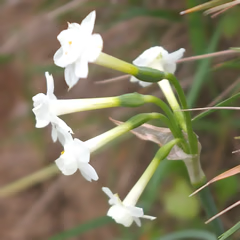
Some fine dryish scenery as I drove to Nimes, the destination of the aqueduct. There is a circular Roman arena here, now a bullring, but I didn't stop, going by minor roads south to St Gilles and by farm lanes through this region of lagoons, bulls and white horses to Aigues Mortes. This is a large old village with impressive walls surrounding the castle and church. Many boats offered tourist trips. Seeing flamingoes wading in a lagoon, I doubled back to take some long-distance photos before continuing on the easy road to Montpellier. Wind-whipped waves on the orange or greenish water of the roadside pools.
I enjoyed the scenery on the way to Lodève, though it had become grey and cool and there was much traffic. Motorway again towards Millau, with a worrying slight snowfall. From the old main road down into the town there's an excellently documented lookout to view the motorway bridge. By now it was cold, dusk and snowing so I stayed in an acceptable chain hotel.
Brighter and warmer in the morning, I drove around and took lots of photos of the magnificent bridge and the pleasant wide surrounding countryside (still with snow on the hills). Mixing limestone-cliffed walls, steep scrubland and occasional woods,the area (the Tarn) is quite different from the part of Swizerland in which I live.
Returning towards Lodève, I was lucky to see a dozen griffon vultures playing on the very cold strong wind. On the plateau near the entrance to the A75 is the tile-roofed Ste Eulalie-de-Cernon set in a wide vista. Apparently this is the village from which the Knights Templar originated and still contains many old turretted buildings, lanes and quaint corners. The original 12th century Templar church was remodelled in 1642 but is of interest even now. The sun brought out the warmth of the stone walls.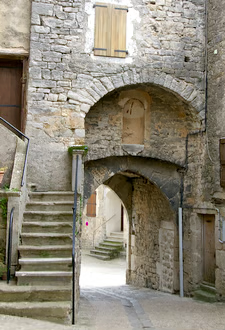 Sainte Eulalie de Cernon
Sainte Eulalie de Cernon
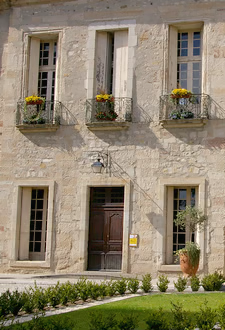 Lodève
Lodève
Dry gorge-like scenery again amidst rocky cliffs and scrub. Lodève, where I strolled for a while, was not as interesting as I'd hoped, but the landscape westwards through Lunas and Bédarieux, following the narrow valley of the river Orb, made up for it. This was a wonderful region visually.
Near Lamalou I went a little way into wooded hills on a very quiet but winding road to read and doze for a while before taking the main road south to Béziers, where I took an unpleasant room and traipsed around before sleeping well. Fortunately the following day went rather better as I strolled round the centre. A good view west from thedisappointing cathedral (the church of La Madeleine was much nicer), sauntered through the original, though hardly used, market of Les Halles and then drove down to the series of locks on the Canal du Midi. I hadn't expected these but the river Orb, which flows past the town just before entering the sea, made them necessary for freight and leisure transport.
Westwards once again, as I thought I had been to Carcassone some years earlier and had found it worthwhile. Also on the Canal du Midi, it sits on the river Aude. But to get there I had to drive through dark woods and slushy snow and out into vineyard country.I was about to leave Carcassone without stopping – little of interest – when, coming over a bridge, I saw a huge castle on the right, the other side of a pretty river. This looked worthwhile! So I dropped the car and walked up the hill in the cold wind – there was a little snow too. I didn't go into the paying part of the castle but strolled around the big fortified village and into the church. The sky was clearing when I left, now going east towards Narbonne.
Country lanes south round Beziers, a cafeteria meal and then into fields by irrigation canals to kip for the night. Young folk who asked what I was doing there had no objections. I was very near Agde now.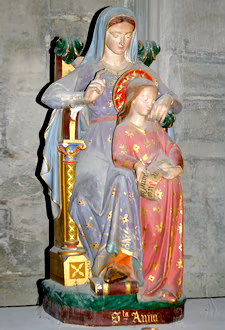 Carcassonne
Carcassonne
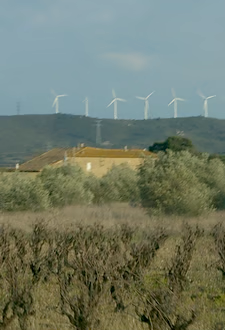 towards Agde
towards Agde
The Cap d'Agde appeared to be thousands of waterfront concrete boxes to house the tourists who come in summer to be seen by the hoi-poloi. Boats big and small, mainly big. Oh, what lovely expensive yachts! But this is definitely early in the low season, with a cold strong wind. So along the beachside road to Sète and yet more boats (rather smaller) parked in front of older houses and hotels.
Towards Montpellier but turning off seawards to avoid the city. Roads have been built here separating the sea from the many large lagoons but it's not easy to pull off to take a break and enjoy the scene.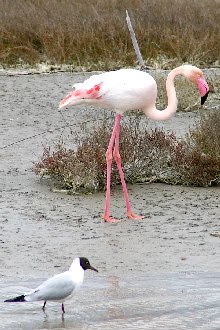 flamingo and gull
flamingo and gull
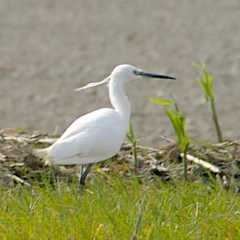 egret in Camargue
egret in Camargue
A visit of the walled city of Aigues Mortes was called for, as I hadn't stopped long a week ago. The lanes are quaint and not the dross found in the playboy 'villages' I'd just come through. Louis XI of France and his knights received the cross in the fairly plain church here for the 7th and 8th crusades to Jerusalem
(1248 and 1270). The king was very young but later sanctified for his endeavours. The city walls are tall and thick (though not as much as Xian's) and outside, in the lagoon, the flamingoes were still exotically feeding.
More lanes, and an unexpected short ferry crossing (of the Petit Rhone) brought me to Stes Maries-de-la-Mer. Not stopping, I took trails into the Camargue and the large lagoons of the Regional Park, a pleasantly quiet but potholed interlude leading to Méjanes and back to Arles, with views of egrets and horses and not much else, though flamingoes flying over wavy water were fascinating.A spell of motorway driving to reach Brignoles for a night in a cheap hotel; I preferred the scenery on the way to that by the coast. By now I was quite content to try to reach home by this evening but without rushing. To Carcès and then by quiet wriggly roads through much woodland and over a 780m pass to reach the dammed blue-green lake of Lac de Ste-Croix, which is fed by the Verdon gorge (the cliffs looked very tall). Stopped again at the tourist village of Moustiers but didn't go into the centre. On to Dignes, full of cars and people, which I didn't recognise as being Alexandra David-Neel's town.
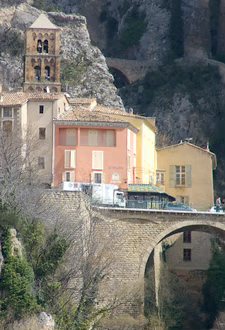 Moustiers-Sainte-Marie
Moustiers-Sainte-Marie
With difficulty I found the road north that I needed, crossing many cols as I went over hill ridges and eventually came to the Lac de Serre-Ponçon. Again a pretty blue, and one could see traces of roads and bridges from before the valley was drowned. Down into the narrow gorge of the Ubaye river and carried on gently to Briançon, bypassed on a (for once) well-signed road. Passing the cloud-hidden Ecrins on my left, and going through several ski resorts, I reached Grenoble and immediately took the motorway to Chambery and Annecy to arrive easily home late in the evening.
The Ardèche, the Gard, the Camargue, the Tarn, Millau and Les Grand Causses, the Languedoc: what exciting names for a sunny spring. Though there was still snow and a chilly wind about. Some fine upland scenery as well as the coast of the Mediterranean with its hoards of parked boats in this out-of-season month. The Verdon, too, on the way back home, and the Grenoble area. But by now the traffic was getting too much so I simply took it easy as I'd had an excellent week's touring.
Southern France Mar 2007
-
London's Winter Wonders Jan 2018
 view the slideshow
view the slideshow
Easyjet to Gatwick,
Express to Victoria,
Oysterpass for week's transport,
Tube to Lancaster Gate,
Walk to hotel.
Mostly grey but little rain.
Trips by boat on river Thames.
Visits to the British Museum and the National Gallery.The first afternoon I took the 27 bus from Notting Hill Gate to Chalk Farm, a route I frequently took when I lived in London. It was mainly a reminder of the different areas and village centres of the city. The covered Camden Market at Camden Lock on the Grand Union Canal was cluttered, as always, by tourists and youngsters there to be seen.
It was soon dark and I had my dinner in a pub on the Kilburn High Road near the railway bridge.A dark grey day, so I didn't even take my camera when I went to Tottenham Court Road and walked to the British Museum. I found the exhibits were very interesting, especially those of Asiatic lands and China and decided to make a second visit tomorrow. It's not very far to Covent Garden where London Transport have a good centre with many maps and ideas. From Bank I took the DLR to Crossharbour in the Docklands area. By now it was raining heavily and I didn't find much of interest in the large Asda there, nor in the M & S by Bond Street. Obviously a day to go book hunting at Waterstones on Kensington High Street and the
huge Westfield Mall at Shepherd's Bush. Fish and chips for dinner in the food hall here, which was quite good, and finished off with a drink in the busy pub opposite my hotel.
The following day was much brighter. By tube to St Paul's and then sauntered around the area and across the Millenium Bridge (a footbridge) before coming back to the British Museum. Had an orgy of photo-taking and then walked to Piccadilly, eating at a crowded Chinese restaurant on the way. I'd been there on other occasions and was lucky to get a seat at lunchtime. More book-buying and a return to the hotel.It was a fine day so I crossed the Bayswater Road from the hotel and entered Hyde Park by the fountains at the northern end of the Long Water (which becomes the Serpentine further south). The fountains sparkled in the light, though the vegetation was brown and crimped. Sauntering across the bright green grass – we don't see that at home at this time of the year – I aimed for the Albert Memorial and the Royal Albert Hall on Kensington Gore. Via Imperial College I found myself at the Gloucester Road station, whence by bus across the river by the Albert Bridge in the last rays of the day's light.
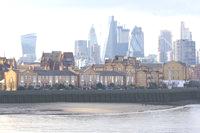
the skyline
from the river boat

Tower Bridge
massively built
The following day started fine too and I went to the Docklands again. Lots of ugly unfinished buildings and watery channels made strolling difficult, so I went down to the riverside and took a river boat upstream. The view from the water is not always very pretty, but you do see the major buildings vying to outdo each other in shape and size. The tide was low so the banks often showed mud and rubbish in front of the expensive converted flats. The sky was becoming dark with cloud but when the low sun broke through it did so with good effect. The Thames is much narrower than the Huang He at Nanjing or the Changjiang at Wuhan so it felt as
though we were continually passing under road bridges. The form of the Tower of London could be seen clearly and then came the Shard to the south of the water and the dome of St Paul's to the north. Now the London Eye became visible over the concrete of the Royal Festival Hall, Big Ben hidden behind scaffolding for its needed restoration, the gaudy Houses of Parliament and London County Hall. But that was enough for now and I was glad to be on foot again near Waterloo.
Visits to shops and a restaurant dinner finished the day in style.From the lack of photos, I assume that the next day was not at all bright and that I traipsed around shops and sat on buses, passing the time away. But there's always something to do or see in London, so I'm sure I was not bored.
Damp underfoot the next day but I went down to the river and along Millbank, seeing some awful new flats near Vauxhall Bridge.

lifeboat in action even on the Thames
Now back into town to Trafalgar Square and the National Gallery; I wanted to see paintings by William Turner. And yes, I gorged myself on his works – I like the way he grades colours to light the sky or sea. Some subjects seem a bit old-fashioned now but that doesn't affect the visible workmanship. On his death Turner bequested much of his work to the gallery and it is well presented. Being a National Gallery, of course there are works by many other well-known British artists and there is plenty to see, even if its only looking at other visitors !
The National Gallery
Trafalgar Square
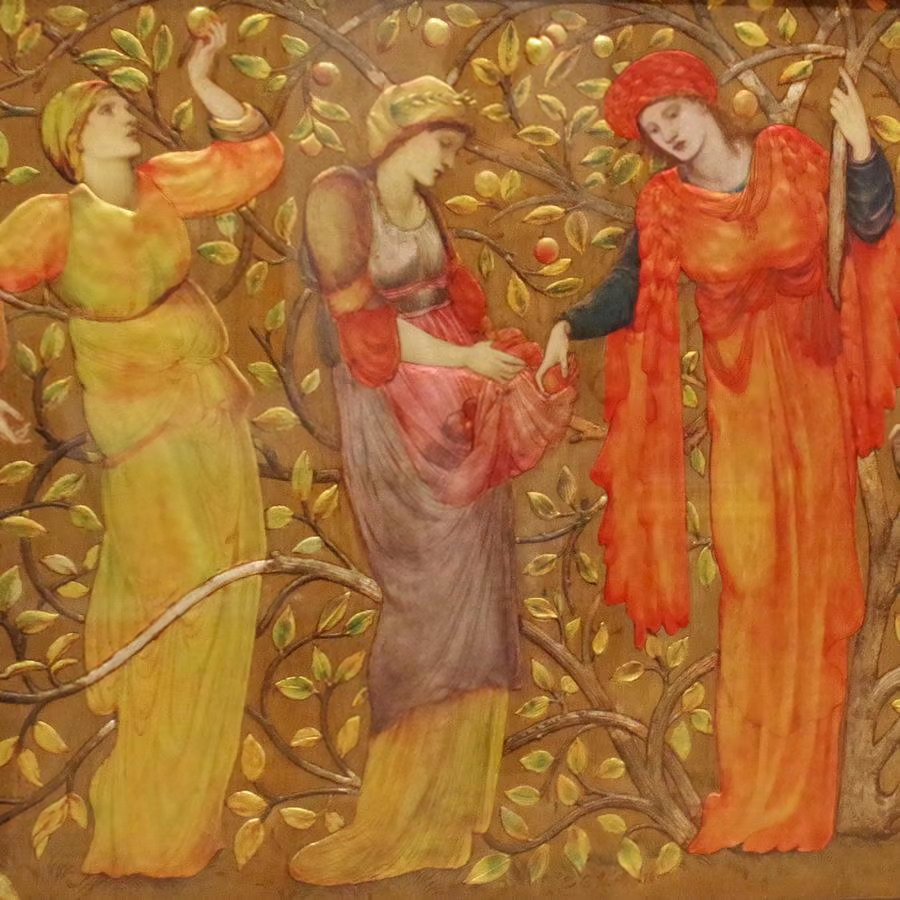
Eight women gathering apples
(detail of frieze)
E. Burne-Jones 1876More tootling about on the buses – you get a good view of the town's life there – trying to remember how the various village centres fit together. Where's Angel, for instance? Well, we came down to King's Cross shortly afterwards. And then westwards towards Bayswater and other discoveries.
Nearing the end of my stay, so it was time to go a little further afield. Past Shepherd's Bush to East Acton, Ealing and buses to Kew and Richmond. A round-about journey , perhaps, but the sky was grey and at least I was inside. Braving the chill at Richmond, I strolled about and across the large Green that I have hardly visited before.The Thames once more, along the Waterfront, before heading back to the West End.
Fortunately, the last morning was much brighter, so I went back into Hyde Park to enjoy the greenery before setting off home via Victoria and Gatwick – a train trip gazing at the backs of terraced houses and scrubby suburbs.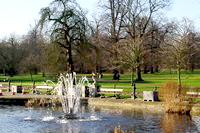
Hyde Park
fountain and lawns
Easyjet to Gatwick,
Express to Victoria,
Oysterpass for week's transport,
Tube to Lancaster Gate,
Walk to hotel.
Mostly grey but little rain.
Trips by boat on river Thames.
Visits to the British Museum and
the National Gallery.London's Winter Wonders Jan 2018
-
Sunny Swiss Roaming May 2020
 view the slideshow
view the slideshow
A sunny spell was forecast so I drove off on a Monday afternoon and was in canton Luzern by teatime. In Beromünster I spent an hour looking at the fine buildings. Through Zug to the Zurchersee and thence by little lanes through hilly woodland to Weinfelden. After a good night's kip, past Au to the charming land of Appenzell and thence to Toggenburg and Safiental. A good outdoors sleep and more hills from Ilanz to Glarus and the Klausenpass, followed by Giswil and Flühli where I spent another wonderful clear night above a grand morning's view. The trip was punctuated by many wild flowers and superb vistas.
By way of Fribourg and Marbach I was in Winikon, near Sursee, in time for a good dinner at the Kreuz and, after a short uphill had installed my sleeping bag in a grassy field beside woodland. Many stars and a couple of planets gradually circled above while I slept well before waking to a magnificent view of the Bernese Oberland miles away. Pottered around in this fine region before I parked in Beromünster

Beromünster foundation
for an hour to enjoy the church and bright old houses around it. The old town centre, clustered around the Stiftskirche, is looked after by a foundation which is gradually renovating the lovely old houses. The Custorei is especially fine. Other buildings in the town are also attractive, though the first church I went in was too fancy for my taste. But now the long-nosed sundial said it was time to move on.
Then across several ridges to Cham down the wriggly main road to Wädenswil. From Rapperswil the road led up to Bauma and, by sinuous sparkling wooded lanes, to Weinfelden - a small town I have always found attractive with its half-timbered houses.
weinfelden
half-timbered café
I thought I knew the area but I got lost all the same, while looking for the Karthusian monastery, on the pretty country lanes where flowers were bright in the cornfields.
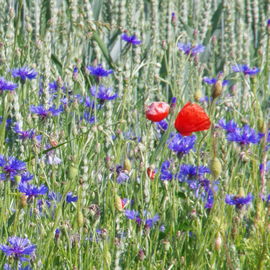
wheat with poppies and cornflowers
Now by main roads to Arbon on the Bodensee, where I had a huge pizza before searching on minor roads for a sleeping spot. Success by quiet Wittenbach! The lakeside road to Rheineck and Au, where I turned uphill to Berneck (lots of corners - 'eck' - here) which has a pretty centre. A stop for a coffee on the way to Appenzell and its hoards of lunching tourists - rather overbearing, so I left fairly quickly. To Schwägalp, where you can take a telecabine to the top of the Säntis, and on down to Toggenburg, which is the beginning of the Thur. A wide valley, but you feel a little hemmed in by the hills. On the way to Buchs, Werdenberg is a village to visit - it was hard to find a parking spot because of the number of tourists.
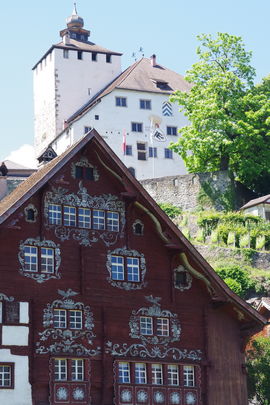
Werdenberg
house and castle
The weather is fine so people are flocking outdoors while they can after their first Covid confinement. Looking for a place to sleep I went through Chur and Bondaduz to Castrisch, where a village café provided me with a good soup and fine capuns, a speciality of the Grisons. Not far away a farmer's wife told me I could stay the night on a field there - an excellent spot with good views and a quiet lane where in the morning I could wash in peace. But now I'm in the upper Rhine valley, do I really want to follow it and go over the pass to Andermatt? I decided I didn't, so back through Chur and Sargans to arrive in Glarus via the old main road to Näfels. Some nice views of Walensee from up there, but the café I paused in was rather poor.
I strolled around Glarus for a few minutes and then carried on up over the Klausenpass - the first time I'd travelled the road for quite a while. The many bikers were less of a problem than the push bikes that take up just as much space but consider the other road users less. Round the back of the Sarnersee, a road I rarely take, to Giswil and up the zigzags towards Sörenberg. This is only open in the summer, but is a good way to avoid the Interlaken area. Stopped at the carpark just beyond the col and walked around in the sunshine taking photos of the alpine flowers. Some big trumpet gentians are out already. Time to look for a place for the night again, preferably east-facing (for the morning sun). Found an excellent place just past Flühli in a fine grassy

Sörenberg
meadow flowers
field, then went back to the village for a schnippo (schnitzel, pommes frites) that went down very well. At first I thought there may be thunder clouds but when I woke during the night the sky was completely clear and the stars were bright. I had chosen the spot well because when I woke up the sun lit the meadows and trees beautifully. The journey home was a simple routine one, via Zweisimmen and Les Mosses. A few wonderful days away!
A few days of sunny weather was forecast so I drove off on a Monday afternoon and was in canton Luzern by teatime. In Beromünster I spent an hour looking at the fine buildings. Through Zug to the Zurchersee and thence by little lanes through hilly woodland to Weinfelden. After a good night's kip, past Au to the charming land of Appenzell and thence to Toggenburg and Safiental. A good outdoors sleep and more hills from Ilanz to Glarus and the Klausenpass, followed by Giswil and Flühli where I spent another wonderful clear night above a grand morning's view. The trip was punctuated by many wild flowers and superb vistas.
Sunny Swiss Roaming May 2020
-
Dawdling
at Easter Apr 2022
 view the slideshow
view the slideshow
It wasn't exactly dawdling, but I felt I was traipsing about while waiting to visit Michael in North Wales before visiting other friends I hadn't seen for a long time. I whiled away my time mainly in the north of England, in the Pennines and the Borders. Much of the time it was damp and chilly but I came across new towns, villages and views all the same. Ended by a vary pleasant stopover at the home of Marilyn and Gwyn.
I left the first Sunday of April, with snow beside the road until well after the Jura, then took the motorway to near Metz. the Vesoul and motorway until Fey near Metz. Dinner at Arlon - lamb chop and frites. Stopped at 8pm just off the N83 and slept in the car up a quiet lane.
A local policeman came to check my passport and wish me a pleasant journey at 9.30, but by 9.45 after defrosting the windscreen I was on my way. Back into France and headed west in the rain through some nice scenery. I meant to look around Ypres but heavy rain soaked my trousers and I saw little of worth. Very cold at Dunkirk, though I'd put on as much clothing as I had. Dinner in a major supermarket and then went to the ferry terminal. My ferry booking wasfor midnight but they'd changed the times (and I hadn't seen the email) so I was lucky to get on just before the boat left at 11pm. Arrived at Dover at midnight and drove to a supermarket carpark at Folkestone to sleep. West to Tunbridge Wells; heavy traffic on narrow wet lanes through poor quality woods with much wind damage. Onto the M4 just before Reading, thus avoiding the built-up London area (it seemed built-up most of the way anyway). By Cirencester I'd had quite enough so I found a hotel, had a good shower and a fish dinner.
After looking in at the church I drove up to Worcester and Kidderminster - a very heavy downpour here - and then to Dudley, where I found the hotel I had stayed in many times no longer catered for travellers.Onwards, then! Bread and meat loaf at a layby without a view before coming to Clee Hill where there was a good view of the valley under a very grey wet sky. Parked on a lane below the main road and, after trying to read, got into my sleeping bag. Nice not to have hedges to block the view. On to Shrewsbury the next morning, where I wandered round the town and the abbey - windy, but slightly sunny. Now towards Stoke and to Leek to look for a hotel. It took many attempts to finally get a reasonable room above the Tea Rooms where I had a necessary shower before a pub dinner of steak and ale pie while others were busy with a 'quiz night'. I stayed two nights here and the day in between I spent in the moorland on the Buxton road and towards Macclesfield -
mostly sunny though occasionally cloud-shadowed.
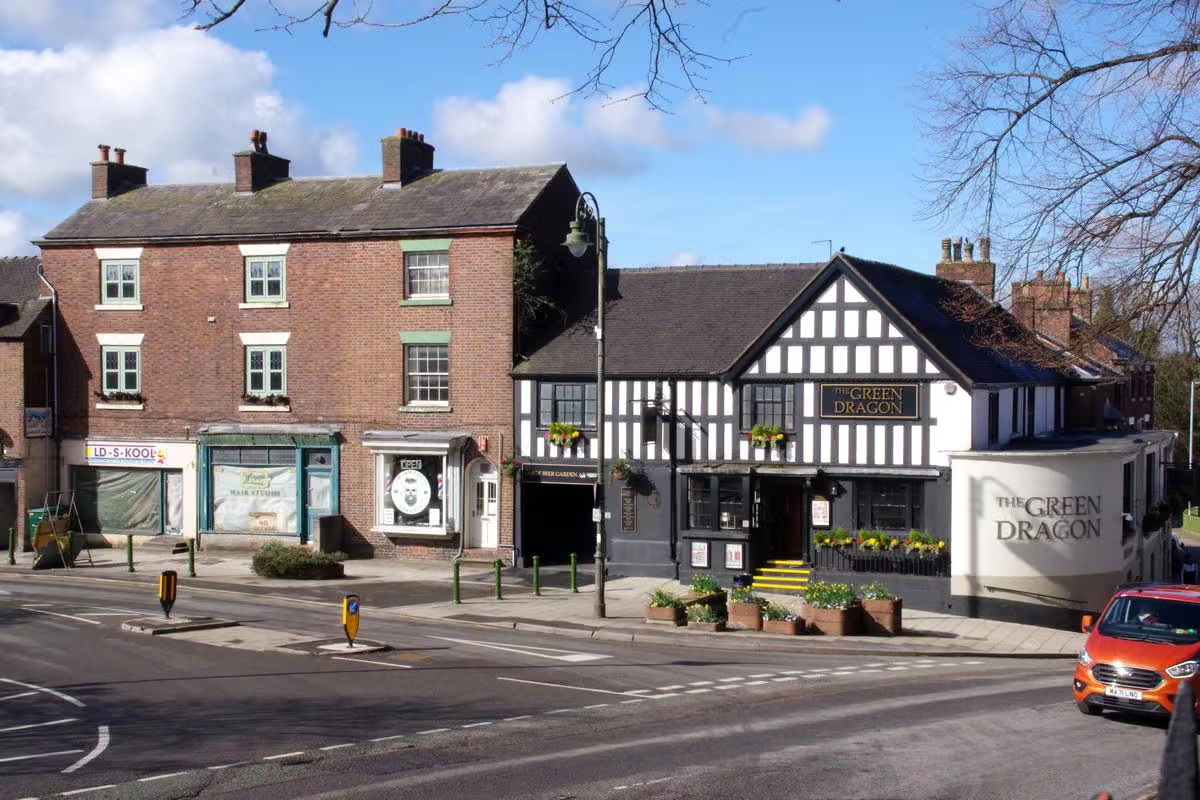
leek town
from the church
Back in Leek I managed to phone Michael, who invited me to stay after this weekend but warned me that daughter Harriet and friend would be staying for Easter weekend. Dinner in a chippie and a drink in a miserable large empty pub before continuing reading my book.A sunny cold day as I drove up to Flash - highest village in Britain at 1505 feet (500m) - and its National Park. Some fine open scenery with some snow on the ground. Across to Nantwich, which has many canals and marshes. South-west to Wrenbury and its church. Ruthin, with rounded, bracken-topped hills before dinner in a village's community centre / restaurant / shop.
Sunny spells the next day when I went to Llandudno via Denbigh, but by the time I got to Holyhead it was grey, cool and miserable again. I toured western Anglesey a little and arrived at Michael's the next morning, just in time to catch him going off urgently, but we had a short chat before I took the north coast road back towards the sandy Dee estuary and rainy Preston.Found a canal-side hotel, apparently a weekend holiday-type place, which gave me the opportunity to wash hair and clothes before taking the A6 towards Lancaster and Kendal. When I was a lad my father used to tell me about the trains to Scotland having to be helped over the summit bank at Shap so I loitered there a while but found electrification has done away with the special 'push/pullers'. North of Carlisle I spent the night in a hotel in Longtown - weather miserable but dinner good. Now I'm in the Borders just south of Hadrian's Wall; bleak country with wide vistas seen through low cloud. However, the laneside banks were ablaze with daffodils though big wind-toppled trees displayed flattened roots which betokened thin soil on top of bedrock.
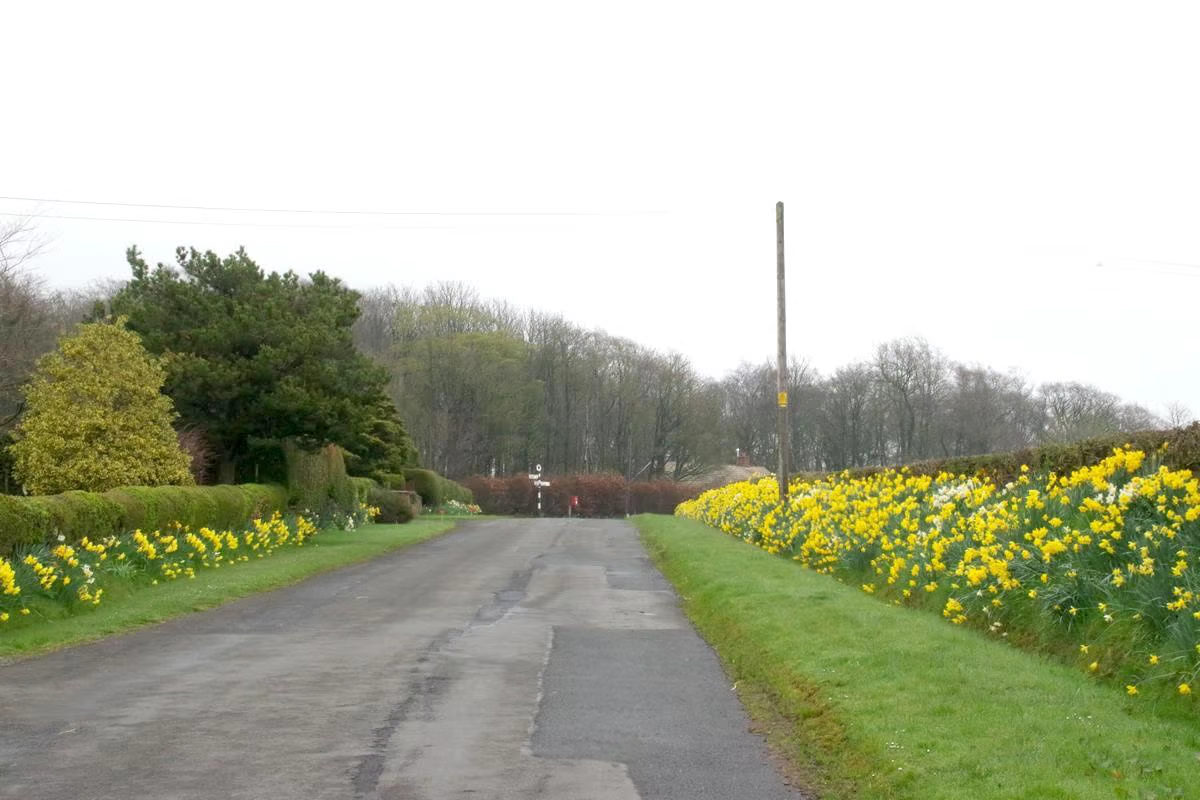
bright show on a dull day
Depressing scenes of sheep mooching among reedy grass clumps as I took a circuitous single-track across grouse moors and a more interesting road, scenery-wise, to Hawick. Across the ridge of the Cheviots, pausing at a tourist 'Border view' carpark on the way to Newcastle and Tynemouth. A clearance site provided a quiet night's kip after a rough supermarket provided pie, bread and cider for tea.
Listlessly by the sea coast of Whitley Bay and Blyth to dreary Newbiggin and then inland to gentle Morpeth where I found a hotel room near the Wanbeck river. Good Friday, but most shops were open normally, though at least the Salvation Army provided a short parade. Down to Durham, which many day-trippers had chosen to visit even though it was dull and grey in the cathedral square. On the coast Seaham has low sandy cliffs above a long pebble beach and further south the church of Headland, the original Hartlepool before the 14th century, is very nice inside. It was a monastery where St Hilda was abbess in the 800s. I was just thinking of my tea when I found a chip shop. "We're just closed. But we have a few chips left". So I was given a very big bag of very
good chips free and sat in the church square to bloat myself with chips, pork pie and bread and butter. It seems to me that I've had a lot of luck in my encounters when travelling around the world. Drove south, seeing a glorious sunset and, to my amazement, a car transporter bridge, though I had to go a long way round to find the other end across the river. No longer functioning and too costly to repair, the bridge towers into the sky. The sun gradually melted away the morning haze as I made my way to the old town of Barnard Castle, where I strolled for a while before the road up the Teesdale. A tall old railway bridge over a narrow stream intrigued me so I stopped and found the line had been turned into a long-distance walk. Very pleasant treeless moorland as I went over the
col and down nasty bends to Alston. The road is bordered by very sturdy snow route markers so I guess it's not an easy road in the winter. I'd noticed a quiet lane near Penrith so found a layby without hedges to block the view next morning and settled down to sleep, in my sleeping bag, in the car. I often enjoy such a kip far more than a stay in an enclosed hotel room.
Drifting about, I went north a little and returned south along hedged lanes that kept my eyes on the road rather than looking at the scenery. At Appleby I found a hotel in the small village, dumped my things and sauntered up to railway station, visiting the old church on the way, where a two-hourly train obliged me by passing through. An ancient two-coach diesel of the sort my fatherwould have taken to go to work 40 years ago!
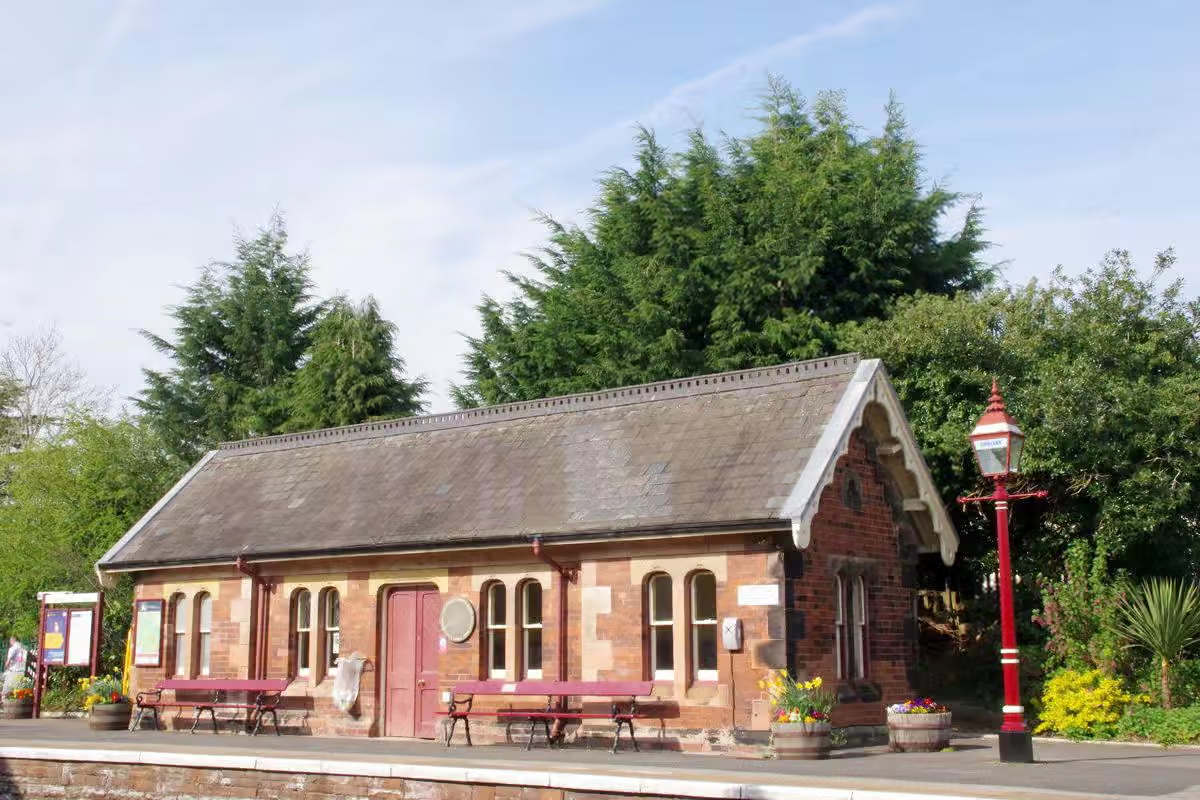
the station
Appleby-in-Westmorland
Back down to the river and up again to the castle where a costumed pageant had apparently been staged over the weekend. Received a message from Michael saying I could stay there at the end of the week - a bit too late, because my ferry was booked for that Monday night. But at least that gave me
the opportunity to visit Marilyn and Gwyn who I hadn't seen for a long while. To Greta Bridge on a busy trunk road and then small lanes across expanses of grouse moorland to Swaledale, Sedbergh, Dent and a wonderful gated single-track lane (probably awful in winter!) where I pulled in for another night in the wide-open world. Heard and saw skylarks on my sunny morning wake-up stroll before buckling down to serious motorway driving towards Conway and then trundling through the always-exciting countryside of central Wales. Walked round the small town of Brecon in sunshine the next morning. Now through Merthyr and Caerphilly to the M4 and over the Severn to arrive in the evening near Andover. All hotels seemed to be full,
but I had a good meal in a pub in Leckford before another quiet night in my sleeping-bag.
What a pleasure to see Gwyn, though he was having trouble walking, and Marilyn, who took me a stroll in a nearby park and to Farnborough by bus to do some shopping. Too soon it was time to pack the car again and take to those busy south-east England roads towards the coast. Release at last at 2am when the ferry churned out of Dover harbour into the darkness ; at Dunkirk I slept a little before taking the motorway through showery southern Belgium and northern France. Even in the rain I was happy to be able to see the scenery as there are no roadside hedges in this area (but plenty of woodland). Now it was plain sailing along or beside themotorway to Nancy, Epinal, Vesoul and Besançon. The home run!
Although I'd not been able to organise my time as I'd wished, I had seen many places (and spent time at them) than I would have done otherwise.I drove to Britain and, via the west Midlands, spent a couple of days in chilly west Derbyshire before crossing the country towards Anglesey. I was going to stay with Michael but unfortunately he had to attend to other matters. North to potter a few days in the Pennines before reaching the Tyne area and the Border country, for which Morpeth made a good stopover. Through Durham to the Pennines again - the Yorkshire Dales were very attractive in sunshine. Via north and south Wales to stay with Gwyn and Marilyn in south-east England. Across the Channel again to tootle back home via Belgium and France.
Dawdling at Easter Apr 2022
-
Zernez and Thusis
by train Oct 2022
 view the slideshow
view the slideshow
Cheap day tickets allowed me to visit the Grisons again. The sunshine lit the hillsides, autumn larches and pretty villages before the sky clouded over. But not before I had strolled down and crossed the Rhine in the Viamala gorge. And I ate well too - dishes we rarely see in western Switzerland.Nothing new or exciting through Bern and Zurich, though the Zurchersee and Walensee were resplendent in the bright sun. From Landquart the train wound up to Klosters and then through the tunnel into the Engadin. You no longer have to change after the tunnel; the line goes directly to Susch.
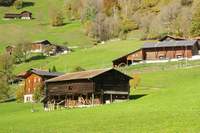
Klosters
railside farms
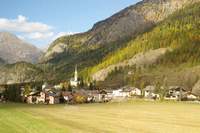
Zernez
major village
I decided I wouldn't take the bus to Lugano tomorrow but had a short stop in Zernez - less than 5 hours from Lausanne - for a coffee. By postbus over the Julierpass to Tiefencastel and train again to Thusis where I stayed in a hotel for a couple of nights.Had a stroll down from Andeer (I really enjoy this area) to the Viamala gorge - fine weather and some fine views. Across the narrow river by the footbridge you see in a couple of photos and back by bus to Thusis as I didn't feel like going up a slope and then down again to continue through the gorge, now grey and chilly in the shade.
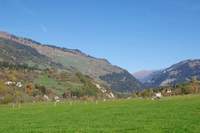
Andeer
valley of the Rhine
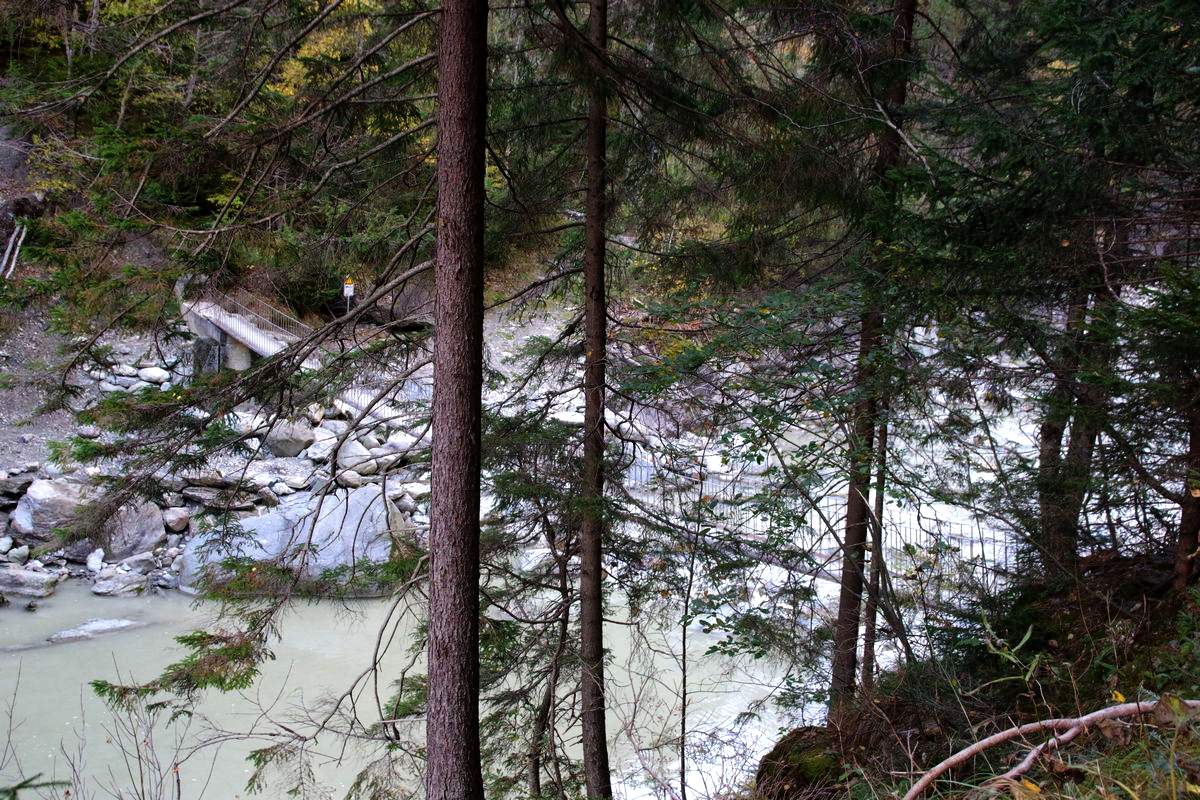 Viamala : footbridge over Rhine
Viamala : footbridge over Rhine
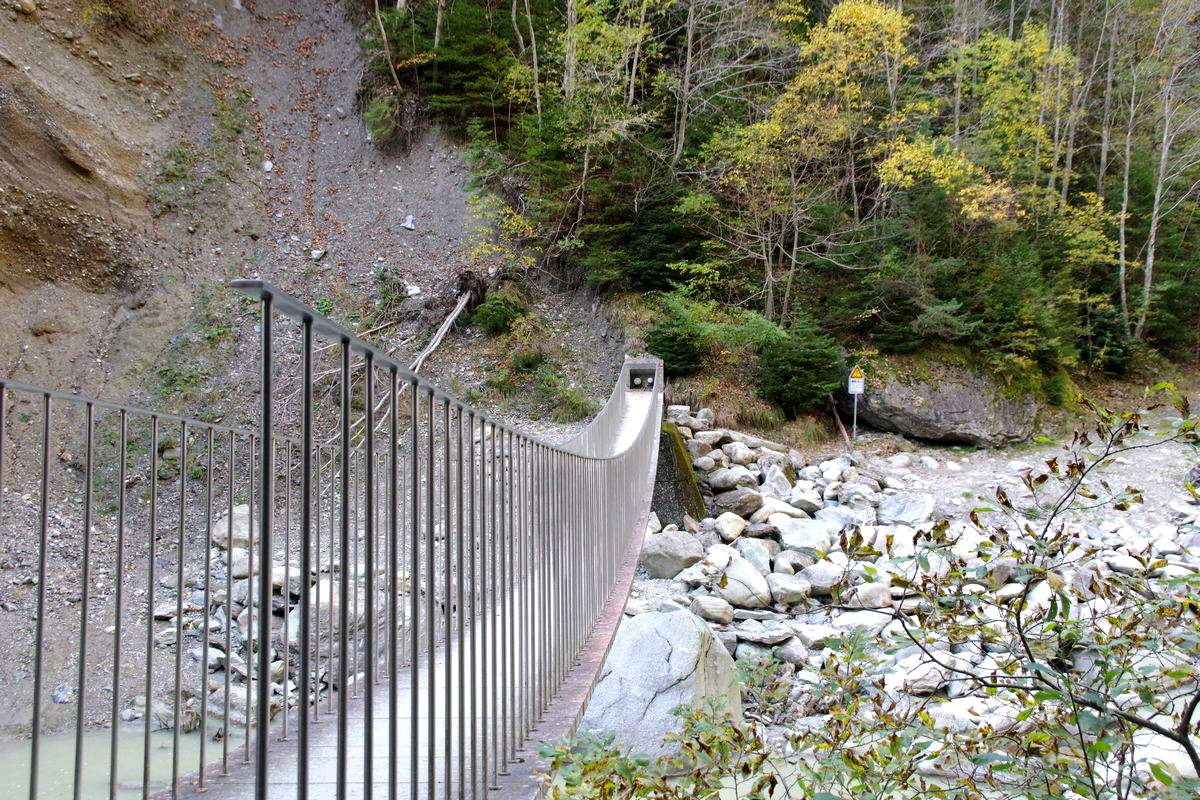 Viamala : footbridge over Rhine
Viamala : footbridge over Rhine
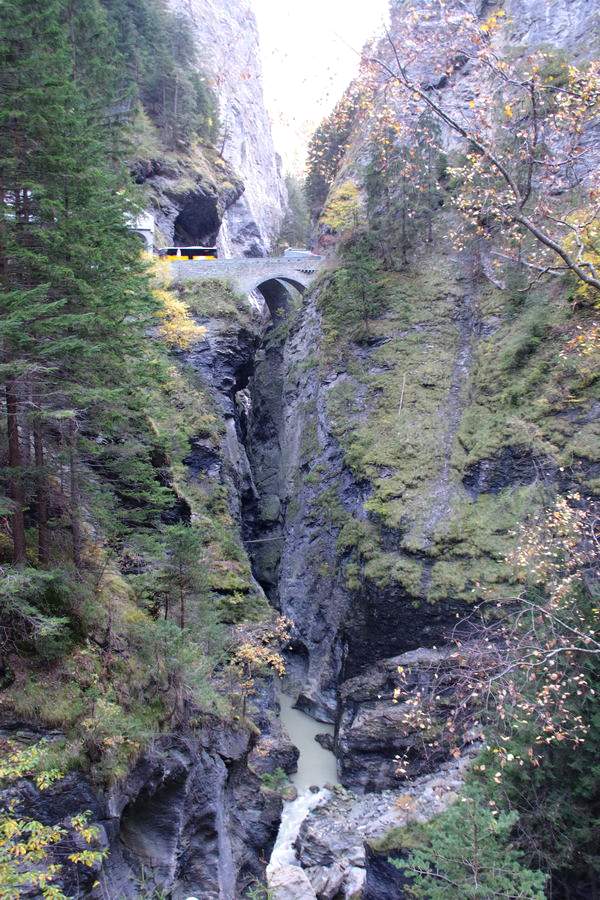 Viamala : Rhine gorge and tall
sheer walls
Viamala : Rhine gorge and tall
sheer walls
Centuries ago, the gentle slopes up the Rhine valley and over the fairly low San Bernadino pass caused this to be a major route between merchant Germany and catholic Italy. But the drawback was a few kilometres just above Thusis - a very narrow gorge with tall steep walls through a dense forest. Brigands seized the opportunity to gain a livelihood by either guiding travellers along the nasty trail or simply pushing them over the cliff if they weren't prepared to pay the required rate. Hence the name 'Via mala' for this section, meaning the 'bad road'.
When I went out afterwards for dinner the restaurant I had decided on was no longer serving food, so I went to a rough-looking place a bit further on. The café was full of construction workers having their evening meal. And the menu looked roughly like Spanish. The patron and his wife didn't speak German and obviously didn't understand Suuremost, so I led him back to his stock of bottles and eventually I asked for cidra (a guess, of course). No he didn't have any so I had white wine (a half litre carafe seemed the smallest quantity possible). But the woman cook served up a wonderful piece of beefsteak with lashings of pepper
sauce and excellent thick juicy chips - I can imagine you slavering just reading about it! No wonder the workers seemed happy at the end of their day. The boss and the two women were Portuguese, so that was a meal quite different from the standard Swiss menu.
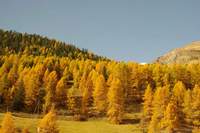
Engadine
larches in autumn
The sky was veiled when I set off the following morning down to Tamins and then up to Disentis and it got gradually duller as I went over the Oberalp pass and down to Andermatt. That was quite a walk I did 42 years ago when I went from Martigny to Martina. The scenery has changed little of course, but they are tarting up many places and building in ernest in Andermatt itself. Through the Furka tunnel to Brig and then down the Rhone valley - all somewhat drab because of the lack of sunshine.
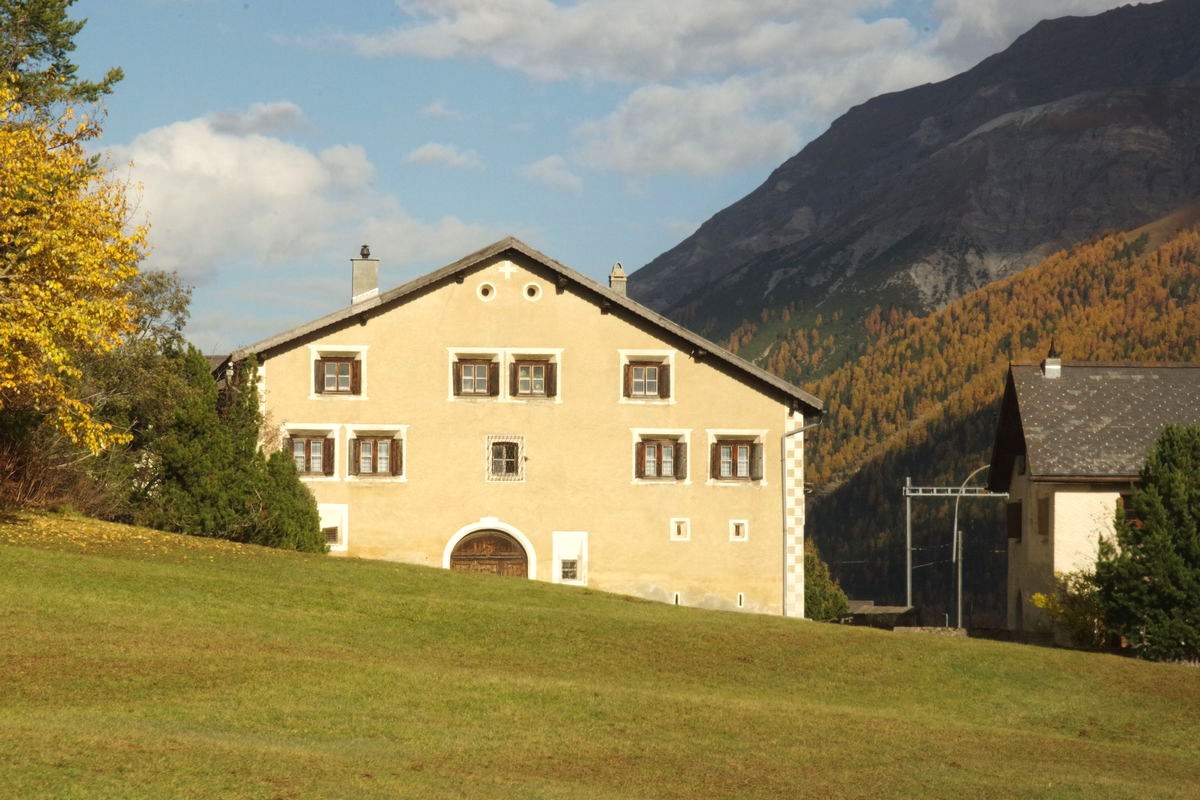


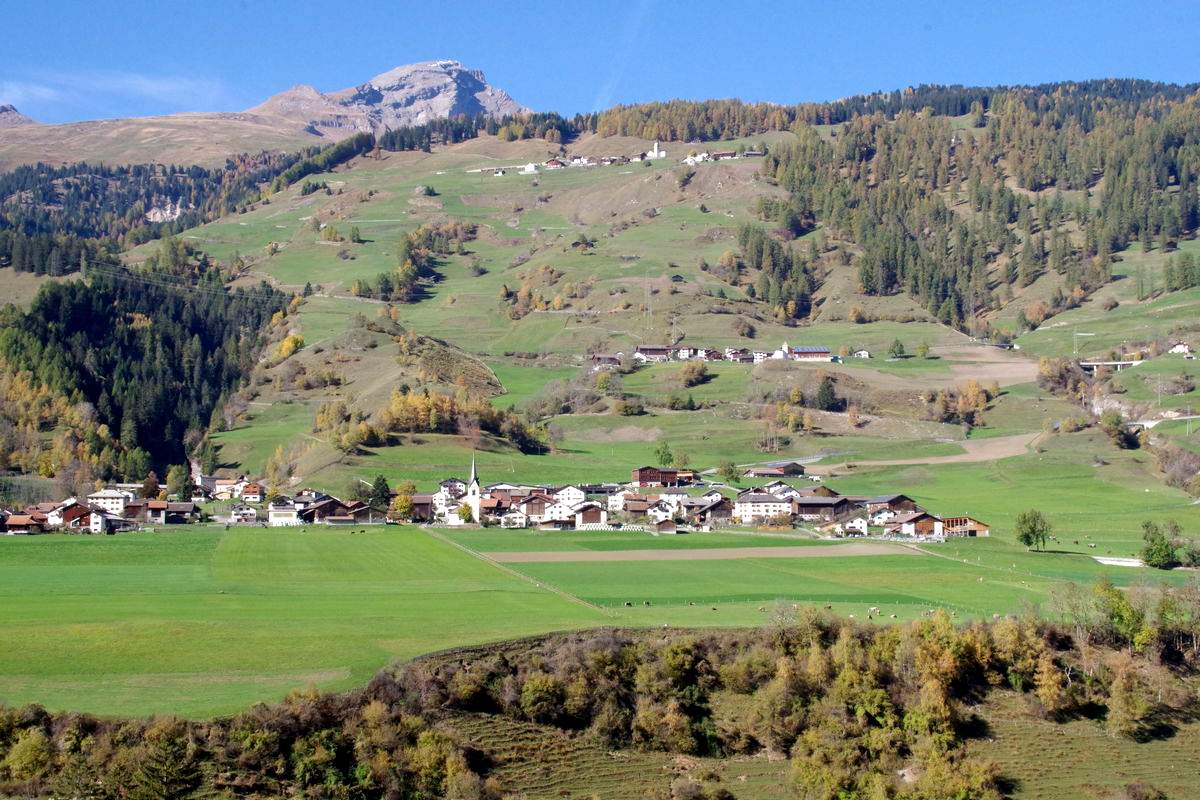
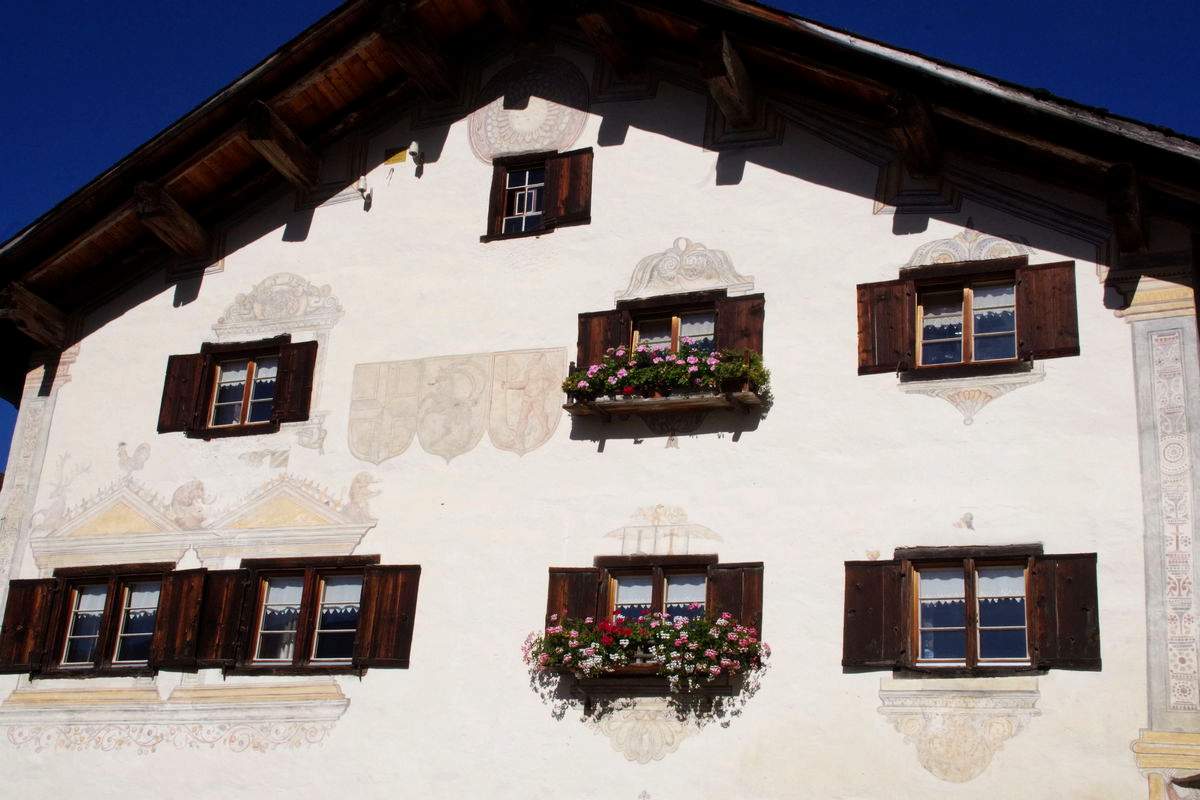
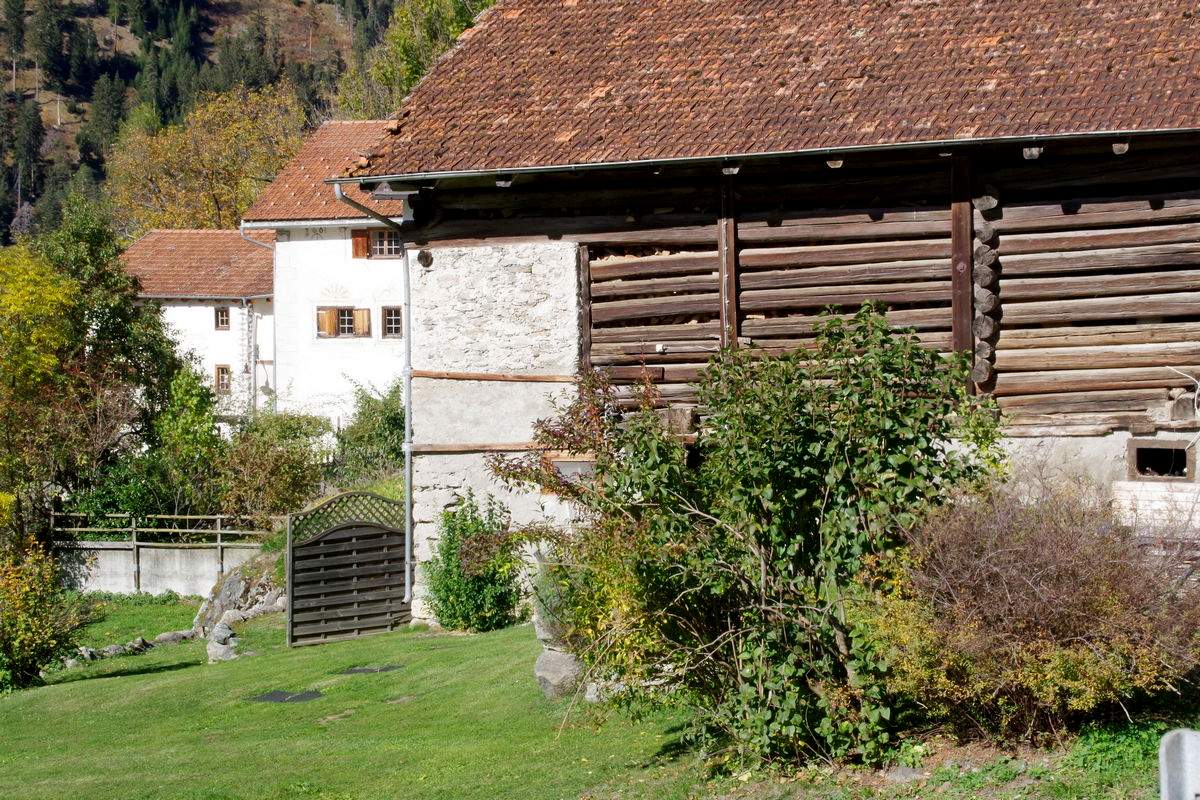
Engadine
Andeer
Reischen
Andeer
Donath
ReischenCheap day tickets allowed me to visit the Grisons yet again. The sunshine lit the hillsides, autumn larches and pretty villages before the sky clouded over. But not before I had strolled down and crossed the Rhine in the Viamala gorge.
Zernez and Thusis by train Oct 2022
-
Autumn in Germany Sep 2023
 view all the slides
view all the slides
 part 1: slides of
part 1: slides of
Ulm to Chemnitz
 part 2: slides of
part 2: slides of
Dresden to Eichow
 part 3: slides of
part 3: slides of
Cottbus to Göttingen
 part 4: slides of
part 4: slides of
Hann. Münden to TrierBlue sky, grey sky, blue water, grey buildings, enlivened by quiet colourful churches and half-timbered houses, deep green forests and wide open fields. Momentoes, relics and statues of a long history, brought up to date by modern transport systems and jovial open people. Parks, lakes and a beautiful sinuous drive following the river Mosel.
Occasional hotel overnights but mainly camping in or near the car. A worthwhile journey with scenes from Roman times to the present day.
 map of the journey
map of the journey
My first evening meal, once safely over the border, was at Holzkirch in a village café where the dialect of the locals around the few tables was very broad and unlike the Swiss-German I'd expected here. A middle-aged painted waitress, very strangely dressed, served the day's special of dumplings and potato salad, also unlike Swiss dishes. Welcome to a foreign land!
First stop of the next day: Ulm on the Danube. From its decorated cathedral cobbled lanes take you past bright half-timbered houses and a little stream to the big river, the banks of which are laid out for cyclists and pedestrians to enjoy the sound of the water. The roofsare steep here but there's no rain today as I saunter through the town and admire the frescoes on the walls of the Rathaus (town hall).
Ingolstadt, a little further on, is another brightly painted town where folk eat outdoors at the restaurants, relaxing. Many fields of hops were being harvested in this region – presumably to make the beer that will be swilled next month in Bavaria.
The river Regen was broad and shallow, flowing slowly under the bridge at Regenstauf, making a pleasantly calm evening scene. Looking for somewhere to eat I followed the meanders through woods upstream to Nittenau.
Regenstauf
evening light

Nittenau
umpah procession
I'm told a new vicar has been appointed and half an hour later a band leads a long procession of the faithful. A quiet place along a dirt road and I sleep in the car; there's no comfortable flat spot to lay out my sleeping bag. The sunshine in the morning has me out early for a stroll to see the area about. What pleasant carefully tended farmland! On to Regensburg's age-old stone bridge over the Danube; many tour groups which rather crowded the pedestrian streets. Great farms of solar panels before rather more quaint Nuremberg and another fine old cathedral. The villages seem to close down at night, so I had an undisturbed night outdoors on the flat tarmac.
I'd heard of Bayreuth so stopped to look around. The Neues Schloss has a wonderfully laid-out garden of trees and lake and there are many other fine houses too.
I was making for Chemnitz, which until fairly recently was called Karl-Marx-Stadt. Here I found a hotel, bang in the centre of the town, at very reasonable price with carpark included. A Chinese buffet dinner in the evening and a good look around the shops and parks the next morning – I felt it was a town I could live in. The land around, on my way to Dresden, was of huge flattish fields worked by very big agricultural machinery.I was soon in Dresden, where I found a hotel where I could dump the car and walk around the city – about 20 minutes to get to the centre. It was hot and very sunny, such that my camera had a problem with the sun/shadow contrast. Over the Elbe, by the Semperoper opera house, the Augustusbrücke bridge was closed for the day to allow trestle tables to be installed by clubs to provide entertainment and food for jolly masses of locals and tourists. All very good natured. The next morning I walked to the Grosser Garten, which is rather like London's Hyde Park: trees amid lawns, though with a big mansion house and pond.
 Dresden : Elbe from the Augustusbrücke
Dresden : Elbe from the Augustusbrücke
 Dresden : on the Augustusbrücke
Dresden : on the Augustusbrücke
From there downriver to Meissen with its crowds of tourists; the Frauenkirche (of which the carillon of porcelain bells were striking) and the Rathaus in the market place and the Albrechtsburg cathedral on the steep hill above overlooking the river boats are renowned. North and into one of the many awful roadworks detours that plagued my trip this time; I frequently lost my way. But dinner at Eichow was good and I found a good quietish spot to sleep in before entering nearby Cottbus in the morning. On the way in I was struck by the imposing Staatstheater which I am glad to say they have not tried to rebuild.
The centre of Cottbus (bombed in World War II) has a dreary pedestrian shopping street and a much more pleasant market place. By the river Spree was a small park with its tree-surrounded pond.
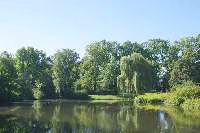
Cottbus
park by the Spree
I had read the the house and grounds in Branitz Park had been modelled in an English arboretum
style but, after a long search I found you had to pay to park and visit, I went on to Peitz where they are recreating the East Lake near an electricity power station. It was very gentle and relaxing here though I saw little bird life.

Cottbus
electricity power station at East Lake
Now it was time to turn westwards via Torgau towards Leipzig after my meandering in the east.
A well-meaning fellow woke me early next morning after a star-spangled night in a field. "Was I all right?" Definitely, but I couldn't get back to sleep! Some Scots Pine woods, flat land and one of the biggest hay mowers I've ever seen were far more interesting than Leipzig's centre so I moved on to Halle (after road works and their detours) though this as well as Magdeburg was also not much to my liking.
However, an excellent dinner, well-served, and a good sleep, once I'd found a suitable spot in the dark, set me up for the following day's jaunt south again towards Jena, which I remembered as being a pleasant town.Tootling along I saw an unusual farm house and a tower at Hausneindorf with a sign saying there would be an open day this coming weekend. As the gate was open anyway I walked in and around, taking a few photos. Apparently they have an EU grant to restore the village's old buildings on a low central hillock. A nearby village also had some attractive farmhouses as well as a large lake seemingly created to be a leisure centre. Horses grazed around it.
Jena turned out to be a mistake, so I went back to cliff-top Dornburg. Some lovely old manor houses and a quiet central square where I had a picnic tea while the sun was setting.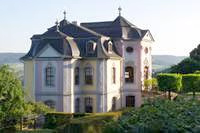
Dornburg
the Rokokoschloss overlooks the land
Lovely wide-vista rolling farm land and a bombastic monument on the Kyffhuser ridge the next day. Ripe pears falling from roadside trees would make a nice dent on a car or on one of the many bikers out for a weekend outing through the sharp writhing shade-dappled bends. Salzgitter-Bad was my halt for the next couple of nights, the day in between taken up by a woodland
search for a lake glimpsed on a map of the small town. A pleasant hotel manager and a popular easy-going neighbouring restaurant made a welcome break from the necessary concentration on the road.
Goslar, just south of Salzgitter, was a mine of cobbled streets, nice old buildings and churches with part of the city wall still standing. On the way to Göttingen I passed many hills where the conifers had been so badly mauled by disease or insects that they had died and the local sawmills were packed with logs to be processed. The town, renowned over centuries for its university, was filled with tourists enjoying the sun. My map said Hann. Münden was next, another town full of tourists.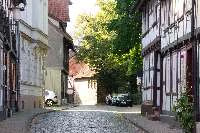
Goslar
quaint cobbled streets in an old walled town
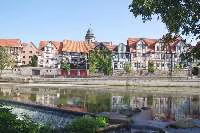
Hann. Münden
old houses and clear rivers, many visitors
Perhaps there were all circling, as I was, trying to discover what 'Hann.' stood for. The handy tourist office enlightened me – it's Hannoversch (Hannoverian), and the Münden (mouths) were the river mouths that come together here and watered the fields years ago. A pretty place of half-timbered houses, towers, quirks and bridges together with a heavily decorated town hall. As long as you weren't searching for vertical or horizontal rectitude you were well served.
Kassel was notable for its poor migrants and the Wilhelmshöhe Park – a grand one on a green wooded ridge where folk could get out of town and enjoy the view.A motorway stretch took me to another medieval town, Fritzlar, where I ate a 'pizza mit allem' (a bit of everything) for my evening meal before I kipped on a farm track. Getting away was very difficult; roadwork signs kept sending me in a circle. More forest damage but I finally reached Siegen, a sweet little hilly town which commemorates the conductor of the orchestra and his brother, first violinist, amid a garden of flowers in the park. Also unusual was the Nikolaikirche which sported a large glowing blue piece of art behind the altar.
I spent the night in my car listening to the heavy downpour on the roof and blinking till midnight at the almost continuous lightning display. It petered out by midnight.Slowly but surely I was getting to Koblenz, a big city where the Mosel enters the Rhine. The old town which the crowds of tourists visit is not that large; like so many German towns it was heavily bombed in World War II so little remains. Following the water's edge I passed the statue at the Deutches Eck, the spur at the confluence of the rivers, and the Altes Regierungsgebäude to reach the drab castle gardens before visiting St. Kastor's church and its fine altar and ceiling. But I soon left the city on the pretty road beside the Mosel. Steep slopes on both sides of the river, covered in vines in full leaf – the grapes will be harvested very soon.
Not much traffic though there were hordes of cyclists on the wide cycle track. A castle at Cochem and a short stroll through the village of Urzig. The Mosel meanders gently – a detour at Leiwen pushed the traffic uphill thus giving a wonderful view of villages in the bends, but I missed taking a photo here. I'll just have to return another year! Wishing to leave Trier until the morning, I stopped for the night in a hotel at Schweich, where I found some workers and a middle-aged group already having their evening meal before 5 in the afternoon. Perhaps they came early to avoid the very long wait I had to be served my fine dinner later on.
I remembered from long ago the heavy stone Roman gateway (Porta nigra) to Trier but I didn't remember the city was the birthplace of Karl Marx. Near the brightly-coloured marketplace is the renowned cathedral, scene of pilgrimages for more than 1600 years, and just round the corner is the Basilika (Roman throne room) and the formal gardens of the Electoral Palace. There's more for a tourist to see here than in Koblenz – it was less heavily bombed.
My journey was by no means over as I continued along the Moselle (the river's name in French) to Thionville and through France to the Swiss Jura and thence home.
Trier
an unexpected icon displayed in the Jesuit church
An excellent trip with mainly fine weather, which invites me to return and see more of the country.Blue sky, grey sky, blue water, grey buildings, enlivened by quiet colourful churches and half-timbered houses, deep green forests and wide open fields. Momentoes, relics and statues of a long history, brought up to date by modern transport systems and jovial open people. Parks, lakes and a beautiful sinuous drive following the river Mosel.
Occasional hotel overnights but mainly camping in or near the car.
A worthwhile journey with scenes from Roman times to the present day.Autumn in Germany Sep 2023
-
Vibrant
Hong Kong Oct 2023
 view the slideshow
view the slideshow
Fishing villages with 30-storey blocks touching one another, the buildings in the Hong Kong Island's commercial centre twice as high again. Even so, the region's scuttling workers and chatting old men generate enormous dynamism. But you can escape all that in the greenery of steep hills covered by woods and dense shrubbery. Take an island ferry on the cluttered waters. Nose around the sampans of typhoon shelters. So much to see. Travel on the metro or the dense network of minibuses and double-decker buses. It's waiting for you.

Hong Kong
within China

Hong Kong
the SAR –
islands and territoryBut first you've got to get there. I made a mistake when booking my flights, ending up with a 9-hour stopover at Bangkok airport. On both legs of the journey the air-conditioning of the Thai Airways planes was extremely cold. as was Bangkok airport itself. Although I was tired, it was difficult to sleep there as embarcations and gate changes were continually being announced by loudspeaker. So for my first few days in Hong Kong my nose was streaming and I was exceptionally tired. However, the hotel room, though small, was good enough to enable a quick recuperation.
By bus to the Star Ferry for its amazing view of Hong Kong Island with Chinese tourists oohing and aahing. Across the choppy water to Wanchai on the island, a few minutes that would open anyone's eyes, followed by a stroll to the racecourse at Happy Valley. This is a green oasis where I sat in the shade of chirping trees along with workers having their lunch break.
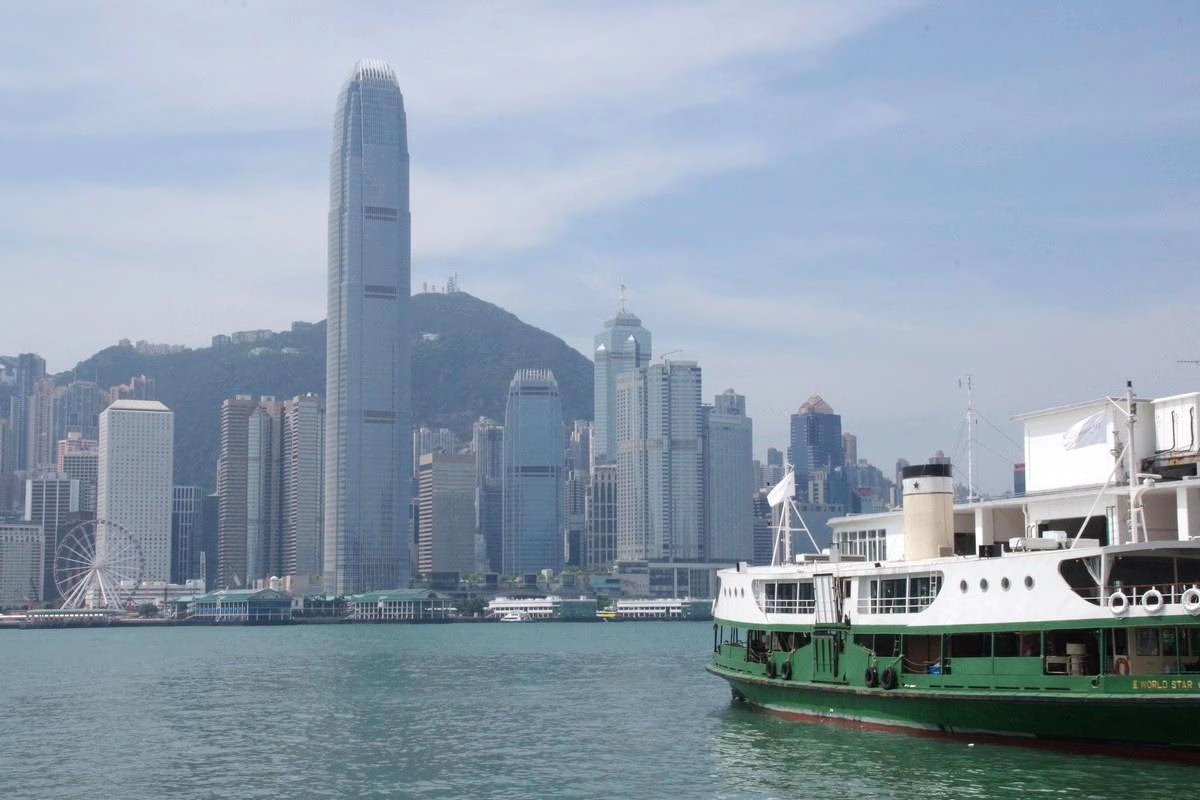
HK Island
from Star Ferry
From there by tram to Shau Kei Wan – beware: it takes time – and its crowded fruit, veg and fish market. The Aldrich Bay waterside prom with its harbour and a view of innumerable tall white flats below Kowloon Peak enthralled me before I returned to a cheap meal in a see-it-before-you-order canteen.
The HK tourist office at Star Ferry suggested I exchange my Octopus transport card for a Senior one (for over 65s) because each bus or metro journey would now be only $2 (0.20 CHF). A short ferry trip to Lamma Island and back with a gentle stroll along the shoreline and through the little village of Yung Shue Wan was an agreeable way to pass the afternoon.On a grey, rainy day with a typhoon warning level 5 (of 10) buses took me clockwise round HK island from Central via Aberdeen and Stanley and the north coast again. Outside the townships (called villages here) was greenery: dense covering of trees and shrubs on the steep hill slopes between the inlets and water reservoirs.
More rain the next day when I went north to Tai Wai, a metro station at the centre of a monotonous forest of tall grey blocks and a few streets of busy little shops. But that was only for a short interlude; it was a day for reading in bed and checking the metro routes for future trips into the New Territories.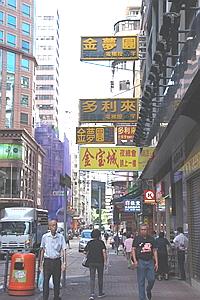 near my Kowloon hotel
near my Kowloon hotel
The metro line to the north-west of the New Territories ends at two border crossing points leading across the river into Shenzhen in mainland China (foreigners are not allowed to use these, though no mention is made of this on the HK tourist map). However, the B1 bus to Yuen Long gave me a chance of seeing the landscape – green and flat on this murky day, though with many seemingly grimy industrial back yards amid occasional low houses. When I first came here 35 years ago this area was thriving horticultural land but apparently ship container storage is now more profitable.
Another bus took me through the green dripping hills to the village of Tai Po Market, which is now simply a sprawling shopping mall serving the tens of thousands who live in the neighbouring blocks. On our left as the 72X bus made its way towards Kowloon we drive beside the sheltered water of Tolo Harbour before turning into a sort of gorge. Sha Tin, here, I first saw 40 years ago. In those days it seemed a dreadful place of ugly high-rise flats; those I saw then, still there, have since been joined by even higher, even more densely-packed buildings. A brutal claustrophobic town that contrasts with the more open valleys by Yuen Long.
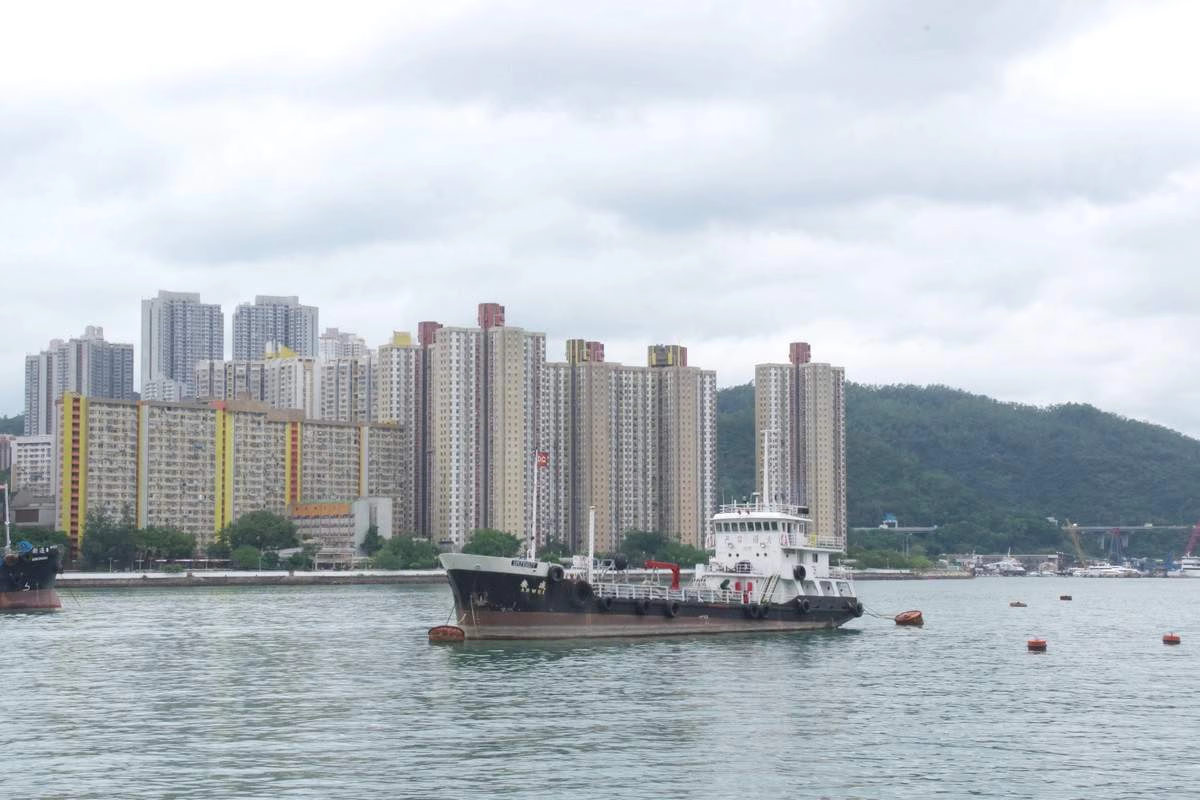
Tsuen Wan
the village bay

Tuen Mun
light rail (tram)
That was the metro line to the top left of the New Territories. The next day I took it to the bottom left the same region. And, lo and behold, I ended up in Yuen Long again. So much for the schematic maps that are doled out nowadays; they do not correspond to the physical reality.
But not to gripe; what did I see? More concrete boxes, of course, but folk have to live somewhere. Tsuen Wan is a little bay around which there is a waterside prom and a cycle path, both well-maintained, though the shops of yesteryear are hard to find; they've migrated indoors. There is possibly a ferry round the corner to Tuen Mun but I took the bus 60M.This bus takes the coastline motorway so that you get a good view of the road and rail bridge to Lantau Island and its HK airport. On the one side, busy water, on the other, steep green slopes. No! Hong Kong is not only closely-packed housing but also wild nature.
The valley between Tuen Mun and Yuen Long must have been one of the first urban developments in the New Territories; I remember you had to take a ferry to get there and then the tram (light railway) between the various villages. The tram is still very much used but its rolling stock is a bit antiquated now compared to the wider metro carriages – unfortunately the two systems don't link well.The metro and bus stations of Yuen Long I'd used yesterday hide below a pair of shopping malls whereas the tram brought me to the traditional centre of the village where most people apparently do their shopping. I would have joined in the bustle but almost at once found myself at the green minibus station and asked how to get to Mai Po, a wetland area known by bird-watchers world-wide. The fellow in charge told me to wait; there'd be a bus in 10 minutes. While I looked around for something to drink the same fellow hurried me onto a bus, giving me a bottle of water of his own – "This one will take you there now".
I had no recollection of the path to take, but finally followed a sign down a writhing narrow lorry-used lane between fish ponds and was rewarded by flocks of egrets, herons and smaller birds. In earlier years there had been nothing on the skyline but the towers of Yuen Long across the wetland but now there were towers across the river on the flatland of Shenzhen and rubbish dumps on this side. But it was a walk all the same, giving me a bit of exercise before I tortuously returned to the heavy sweaty hubbub of Kowloon.

Wu Kai Sha at the top right of the metro schema was a disappointing village of blocks where you don't seem to be allowed to get to ground level; there were no shops there anyway and none on the neat elevated transparently-covered walkways. A rare map told me this is a headland between two bays so I strolled down to the poor beach and walked to the next hamlet of towers. The little greenery here was insufficient to keep me from jumping on the next tube to HK island to search for a never-found restaurant. But by crossing the water by ferry at night I relived the movingly colourful magic of the harbour-side buildings.
Another expedition to the Mai Po marshes as it was sunny today. This time I searched for the road that follows the river boundary but, as a policeman popping out from a cubicle told me, this is now a prohibited area. So I wandered among fish ponds after sitting in the sun and was rewarded by seeing, one at a time, a dozen metallic-turquoise kingfishers dart by in the afternoon quiet.
A Sunday stroll on sunny Lamma Island was also peaceful, despite the many people. Here you are enveloped in the trees and shrubs as you climb past a sandy beach and over the rise to descend to the other ferry terminal, Sok Kwu Wan.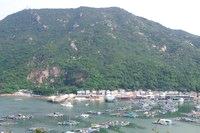
Lamma Island
Sok Kwu Wan
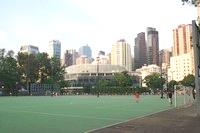
Victoria Park
space between blocks
It seems that Sunday is the housemaids' day off as you find all the HK squares are filled with small groups of Filipinas or headscarf-covered Asians calmly chatting away, sharing their meals or singing and dancing. At Victoria Park, a large flat area among the sunset-coloured towers, young locals were playing football or other sports. And, nearby, I at last found a west-China style noodle café where I slurped a big bowl of soup with noodles and dumplings.
On Monday I took a minibus east across the city from Mong Kok to Sai Kung, a big peninsula with many coves. It was a pity that I hadn't been before because here, at last,the villages were of a more manageable size and the greenery of the hills and around the bays was very refreshing. After walking to the next village I hopped on a bus to Ma On Shan village to view the scenery. The village was dull as usual, so I returned by the hilly forest road, getting off at a convenient stop. It was one of the many shady equipped barbecue sites from which a very steep short lane led to a block of low houses hidden in the woods with a view over the inlet below. Further up the main road hill a couple of low blocks looked across the valley at the magnificent thick shining shrubbery that a lane cut through.
Still further up, at the road's high point, one of the trail-walkers paths crossed. It's a multi-day walk across the hills that hardly touches the villages. No, Hong Kong is not only buildings!
But I continued on the road, down to the water's edge, past more shaded barbecue sites and gazed at the small islands glinting in the bay, cursing that I hadn't come here earlier in my stay. Sai Kung itself is not large but has many restaurants specialising in fish, as is usual at waterside establishments.
The following day I took my bag to Lantau's HK airport, stored it for a few hours, and took a bus over the steep hill. More woods, more fresh air, but the sky was grey again.The return flight, with a short transfer at Doha in Qatar, was nothing special. You just sit there, numb-brained, perhaps ruminating on the two weeks you've passed, the opportunities taken and the opportunities missed.
I'd have done more if I'd prepared myself better, taken some maps and had better weather. But I did what I did and was pleased enough. A good change and some good memories.
Sai Kung
the bay
Blue sky, grey sky, blue water, grey buildings, enlivened by quiet colourful churches and half-timbered houses, deep green forests and wide open fields. Momentoes, relics and statues of a long history, brought up to date by modern transport systems and jovial open people. Parks, lakes and a beautiful sinuous drive following the river Mosel.
Occasional hotel overnights but mainly camping in or near the car.
A worthwhile journey with scenes from Roman times to the present day.Vibrant Hong Kong Oct 2023
-
The trip of the Failed Ramble Aug 2024
 view the slideshow
view the slideshow
Some weeks ago I tried to repeat a walk I'd done 40 years before. I had a great time, but was too tired to reach the high point and had to return. So this time I decided to take the bus to the Lukmanier hospice, walk over a gentle pass and then down the valley of the Ticino. Failure again, though I did stroll down below the Ritom reservoir. A chance to take the funicular to the valley floor and then travel by bus and train through the Grisons and Appenzell.
Fine weather and some fine sights on this three-day trip.I left Lausanne just after 10 on the train to Zurich that skirts the Lake Neuchatel and the Bielersee. Lovely weather and sparkling water. Now onto the train to Chur, passing alongside Zurichsee and Walensee – again brightly glinting. An hour in Chur so as not to miss the train to Disentis that connects with the last bus up to the Luckmanier pass.
Chur was thronged with people shopping and tourists ambling through the lanes to admire the decorative old buildings. And the railway line up the Rhine valley is equally spectacular, the river descending, rippling and gurgling through a gigantic light grey rockfall thousands of years old.

Chur
old town square
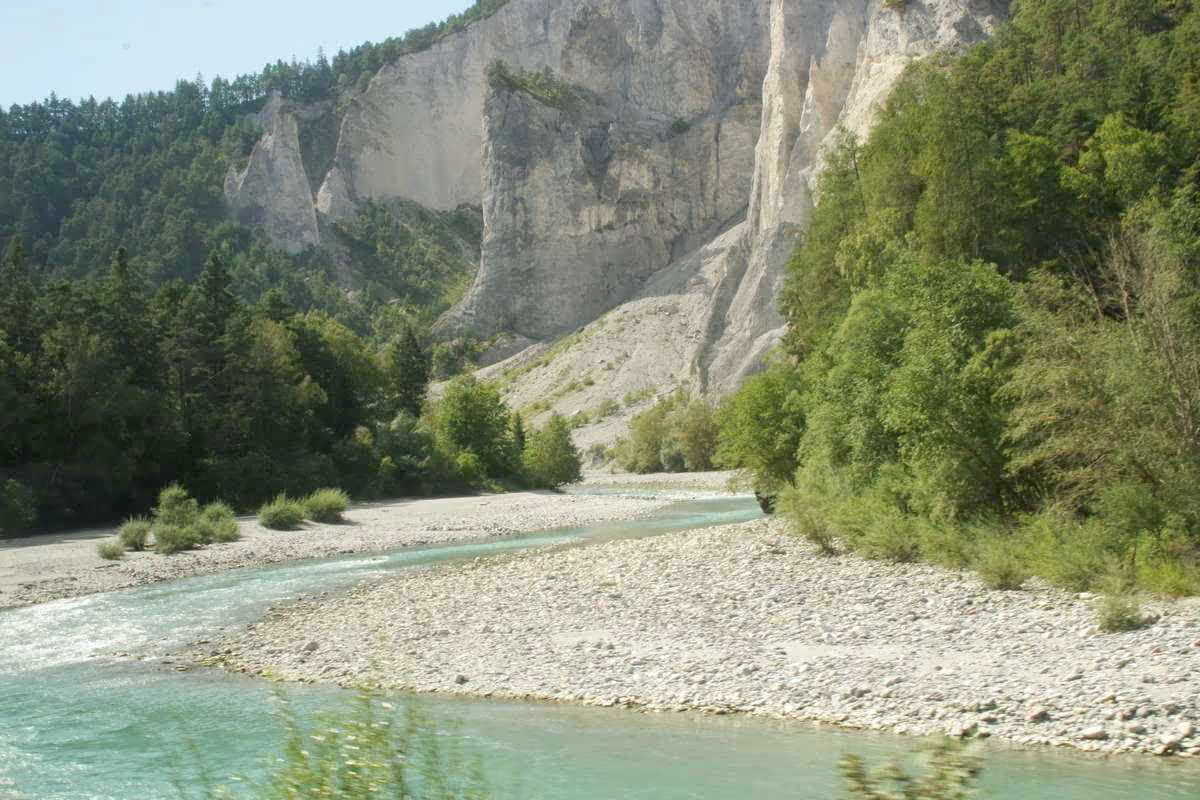
Upper Rhine
curls through rockfall
The postbus was waiting for the few passengers returning to their valley villages, but by now the sky was clouding over and the grey deepening. So, at five o'clock, I entered the restaurant at the pass above the Lukmanier reservoir and had a hearty meal before setting off on foot an hour later along the lakeside track.
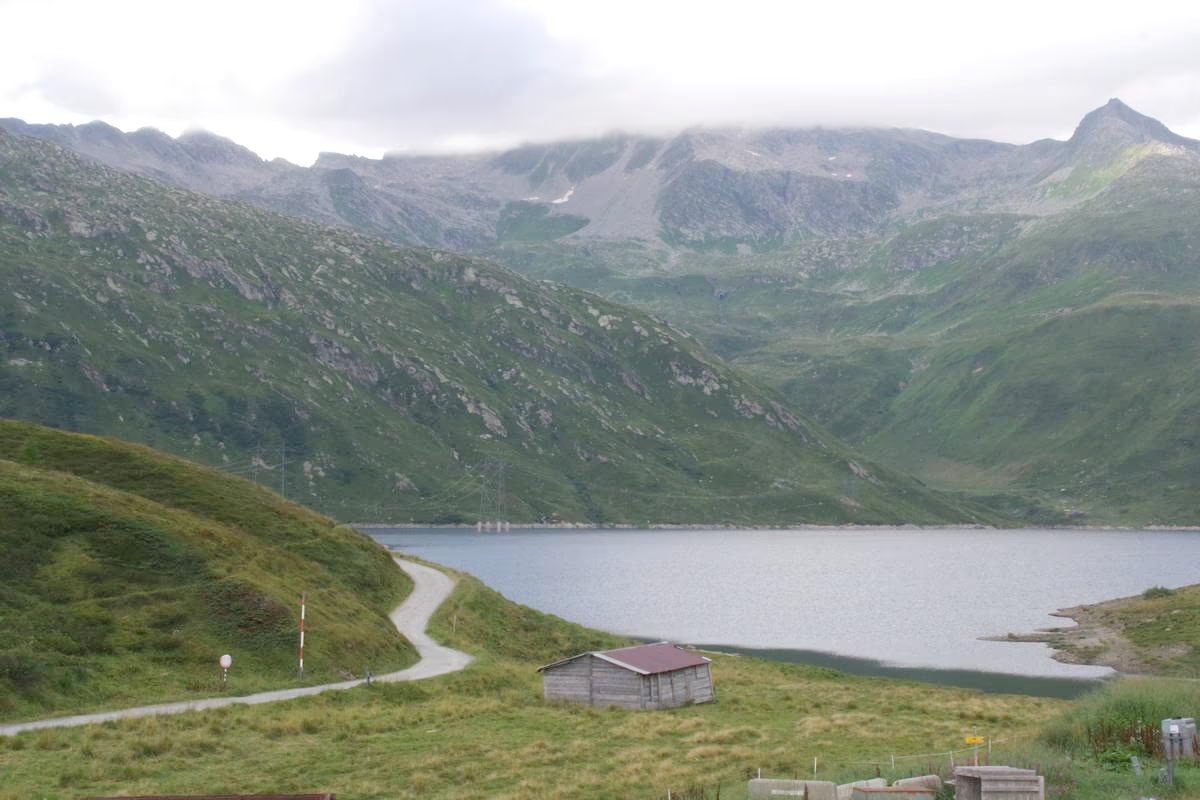
Lukmanier
reservoir
It was much cooler than in Chur but I expected to keep warm just by walking. A small flock of bedraggled sheep came up the track just before the junction of my path leading up to the Passo dell'Uomo and then the gradual climb began. A track that military and utility vehicles could handle easily but my legs didn't feel they had much of an engine in them. It seems I haven't done much exercise over the last many years.
The sunshine had disappeared, though the forecast was not bad. On upwards, puffing and panting, past a footpath sign at 2200m saying I was nearly at the pass. And in a few minutes I saw what lookedlike stone-built military barns at the high point – I hadn't expected that at all but was thankful there was a roof if rain did fall and that the high walls would protect me from the wind that you often find at a pass. I intended sleeping outdoors as usual.
The grassy weedy yard between the barn seemed to have been used as a toilet by needy hikers but, in the remaining light, I found a reasonable spot for my bed. There was even a cattle trough with running water. Soon in my warm bag, I didn't wait for the lights to go out; I scarcely watched the grey clouds scurrying past high above.
Sometime in the night I woke to find a bright moon shining in a clear sky and in the morning I felt a chilly breeze hurling tatters of mist above. But I know enough not to jump out of bed – I don't do it at home, so why do it here? But even good things have an end, so when the sun finally appeared from behind the barn roof I got up and had a piece of cake and a mug of water while drying my sleeping bag and groundsheet after the night's dew as well as taking a few sunlit photos.
All downhill to lake Ritom, my map said, but that didn't mean easy walking; in fact I often stumbled on the rocky footpath.
Passo dell Uomo
barn for the night
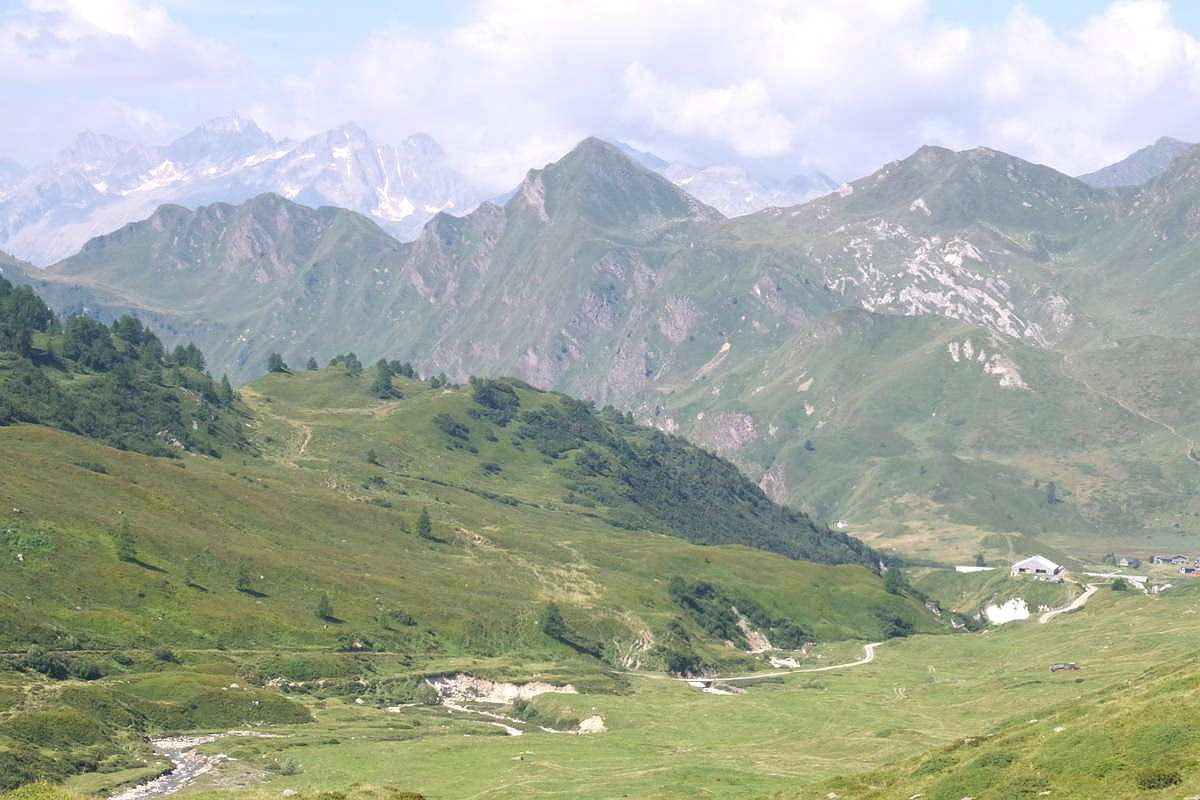
Capanna Cadagno
on the path down
Past cows grazing on the alp, down to an alpine hut feeding day trippers who had strolled or struggled up from the dam or the funicular. The dirt road from the valley also reaches here so I stumbled less on my way down to the small Lake Cadagno where hay barns have been converted to holiday lets. Just below there the road bends to give a splendid view of bright blue Lake Ritom below. The midday sun parched the track and the occasional vehicle churned up the dust. A lie-down was needed when I got down to a cow byre on the flat and afterwards I was glad of the tree-shade just before arriving at the concrete dam.
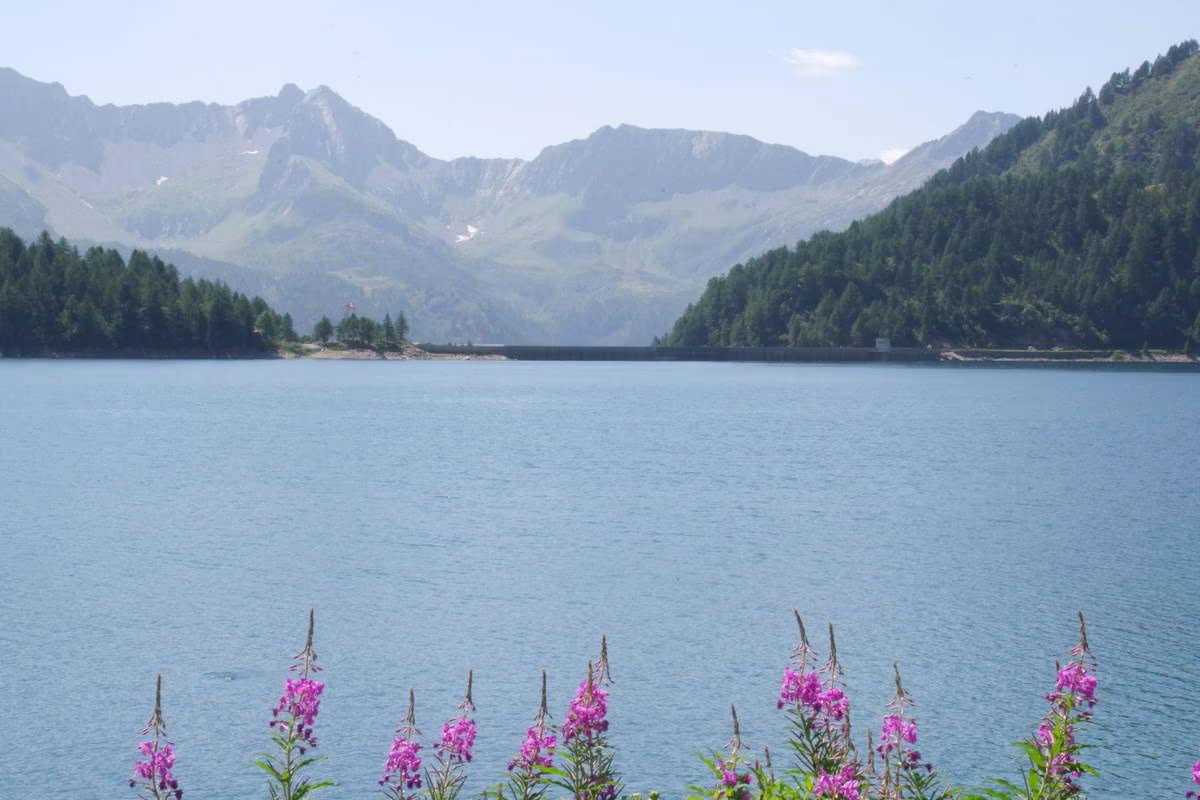
Lake Ritom
bright and sparkling

Ritom - Piotta
welcome funicular
There's a café and dortoir here but I'd decided to push on as far as the funicular railway down to the Ticino valley floor – a walk down the steep wooded slopes to the road that joins together the little villages on the balcony above the river will have to wait till a later date. This funicular had been built beside the impressive water pipes feeding the electricity generating station down below – the workers would have taken all day getting up the winding road from the valley and back – and now it's a tourist attraction; the steepest funi in Switzerland.
A stroll across the motorway to catch, only just, the postbus down the valley to Bellinzona, where I just had time to snatch a drink andan ice cream before I left on the express bus towards Thusis. I got off along the way and wasted time waiting in Splugen and searching for a hotel in Andeer before deciding to stop in a hotel in Thusis for the night.
The following day, again with a day ticket, I trained down to Chur and on to Altstätten to go up to Appenzell. A bus took me up to Gais as the railway line was being repaired – little shady lanes with views back down to the flat Rhine valley. Many tourists in an Appenzell decked out in its best sunny colours before the train took me through the canton to display its many distinctive houses.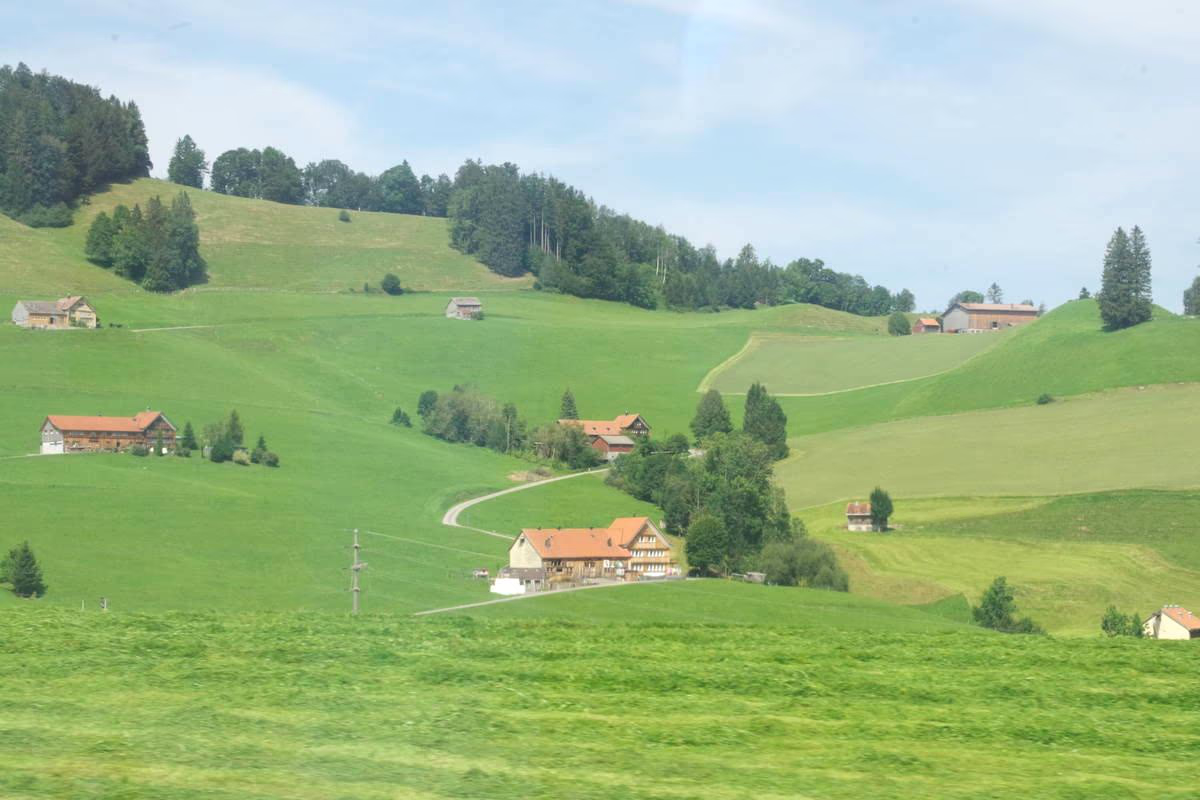
Appenzell
pretty scenes

Urnäsch
train and farms
After the colourful rolling countryside the return home on a rush-hour train was rather a let-down, but there are nonetheless some fine sights along the way.

Altstätten
house entrance
Some weeks ago I tried to repeat a walk I'd done 40 years before. I had a great time, but was too tired to reach the high point and had to return. So this time I decided to take the bus to the Lukmanier hospice, walk over a gentle pass and then down the valley of the Ticino. Failure again, though I did stroll down below the Ritom reservoir. A chance to take the funicular to the valley floor and then travel by bus and train through the Grisons and Appenzell.
Fine weather and some fine sights on this three-day trip.The trip of the Failed Ramble Aug 2024
-
Britain :
rain and shine Oct 2024 view the slideshow
view the slideshow
France, Belgium, ferry, England, Wales, Scotland and back again, with a short passage through Germany. The expectation of cool mixed autumn weather was honoured – by the bucket-loads of rain, narrow flooded lanes and few vast panoramas.
But the sheep were on the moors as always, the bracken brown and, lower down, the grass a dazzling green. The church architecture amazes me still – the potholes and broken pavements too. Seas, lakes and rivers, waves and meanders were all there, timeless.I'd booked a ferry crossing for 6am so, although leaving home at lunchtime, I had plenty of time to reach Dunkirk through Metz and a corner of Belgium. The route to Lure through La Chaux-de-Fonds, St Imier and Delemont was not as easy as I'd thought; I'll have to find a less annoying way. Roadworks in the Longwy/Arlon region forced an unpleasant detour but after that it was plain sailing, though with some heavy rain in places, and I had lots of time to spare before taking the 4am boat. The crossing takes 2 hours.
I had a short stop in Birmingham's centre after driving from Folkestone up via Reading and Oxford. A noisy pub dinner next to the Redditch hotel and the next day drove the old A5 road to Llangollen and Llanberis. It was good to see Ian again; later wewent to a local pub and met son Simon and brother Michael.
The rain held off so we did Ian's standard 4hr walk down through the woods to Llanberis and round its lake before the hill up again. Very pleasant.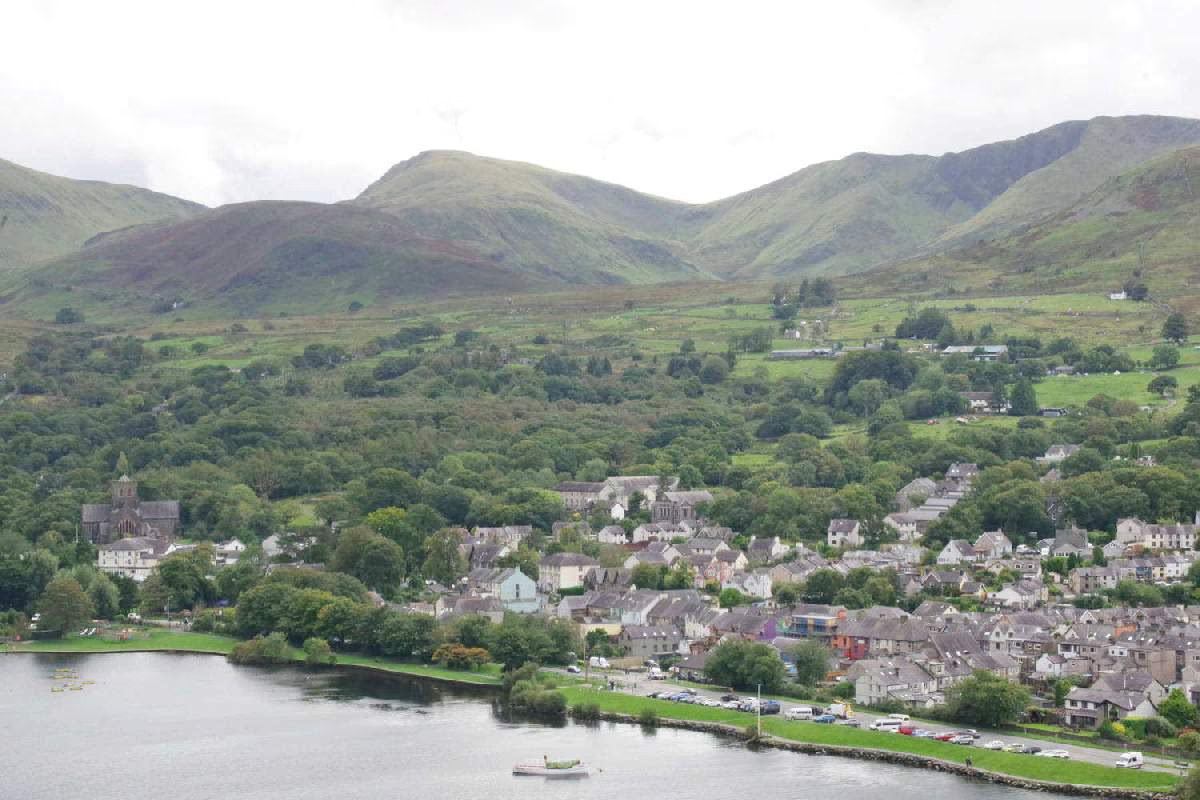
llanberis
lake and hills
We pottered around the next day and then I drove off eastwards towards Yorkshire and its hills and dales..I was hoping for sunshine, as we do when setting off on holiday, and good views of autumn colours. But the weather was not on my side; I saw rather too much rain and gloomy grey skies. Many lanes in Wales and south-east England were narrow and had tall hedges, insisting on concentration on the road and hindering all sights left and right.
But there were also brighter moments, such as the village of Bishop Burton, with its greens, main-road duckpond and large church and, later, the jumbled market square of Thirsk. Once or twice, the moors of Weardale between Northumberland and Durham were aglow (though on other occasions were wet and grey). When the sun was out the ochre and tawny colours of the moors were enhancedand the quiet open lanes could be travelled slowly and joyfully. I zigzagged, trying roads I'd never travelled before to link places I did remember. I'd never been to rainy Alnick and its castle, for instance, nor visited Berwick-on-Tweed in England, a haven just before you enter the Scottish border country. It is of here that 'valorous' deeds of cattle-stealing and human slaughter were celebrated in poems and books.

tweeddale
mature tree spreads magnificently
However, the cloud was often very low; you wouldn't know there are any hills here – they were invisible. So, after a hotel night near Dumfries I pointed back to the Pennines. The gently sloping cattle-gridded lanes of the Tweed, Tyne and Lune valleys showed rough fields outlined by drystone walls and only occasional farmsteads. Many have been abandoned; it can't be an easy life up here. There are abandoned mines too; iron, lead, copper amd minerals were extracted from minor sites years ago.

now a tourist site
The ridges are rounded, treeless, brown with bracken and heather. The murky wet land beside the road, where the sheep roam unhindered, has clumps of reedy grass spreading afar under the cloud. A little lower down some copses of conifers or possibly some hardwoods struggle to thrive, growing very slowly. Churches and houses hunker down, protecting themselves from cold winds and rain. There are outcropping patches of rock, too, as grey as the sky.
Help, however, is at hand – the Tan Hill Inn (also with thick stone walls and the highest in Britain) is open for meals, drinks and overnights. And the valley down was joyously sunlit, bringing out all the autumn colours I was hoping to see!That was only an interlude; the rain and autumn temperatures insisted on spoiling the fun. I'll not put up with that so rush off by drenched motorways south back into Wales. As if the weather is always good there!
Once again I'm stuck between tall hedges, unable to see the world out there. I decided to spend a couple of nights in a hotel in Aberystwyth where the cloud was not quite so overbearing. Fortunately the sun appeared at Lampeter, where the oldest university in Wales opened in 1827, and still favoured me when I arrived near the coast at St Davids. I'd been to the cathedral here before and again found it very impressive. St David, who died in 589, founded a monastery here which was saught out by pilgrims from all over Wales as wellas England. King Henry II came to hear mass the year after the Archbishop of Canterbury, Thomas à Beckett, was murdered. My good fortune continued when I went to the nearby coast for a stroll; the sun on the water was wonderful, lighting up the colours of nearby Ramsey Island.

ramsey island
colours of the straits
The interlude didn't last long; after dreary narrow lanes I visited Tintern in the Wye Valley and quickly left for East Anglia.
Few tall hedges here; you can often see a long way across the flat land. It was the style of the churches that fascinated me here. They are of a light stone and often coated with flint and other stones: much more airy than those in northern England. Perhaps because of the sun I noticed the brightness of the flowers too. Worstead is a favourite haunt of mine – the church is big but pretty. I slept a night there and had a lazy sunny stroll the next day.
At the seaside the tide was out, so there was little to see; I am not often interested by the sea anyway. But it's there, so I followed the coast south to visit a few towns and resorts. Switzerland has no sea and it made a change.Almost time to catch the ferry back to Europe, but I didn't want to anywhere near London. But after a short bright spell at Hungerford I braved the busy narrow main roads of SE England in very wet, traffic-infested, poorly-signposted roads to get to Dover.
And what a relief it was to wake to sunshine and an extensive view at Dunkirk! Brugge is more or less on the main road to Brussels so I stopped there to see its canals, bridges and old buildings erected for merchants centuries ago.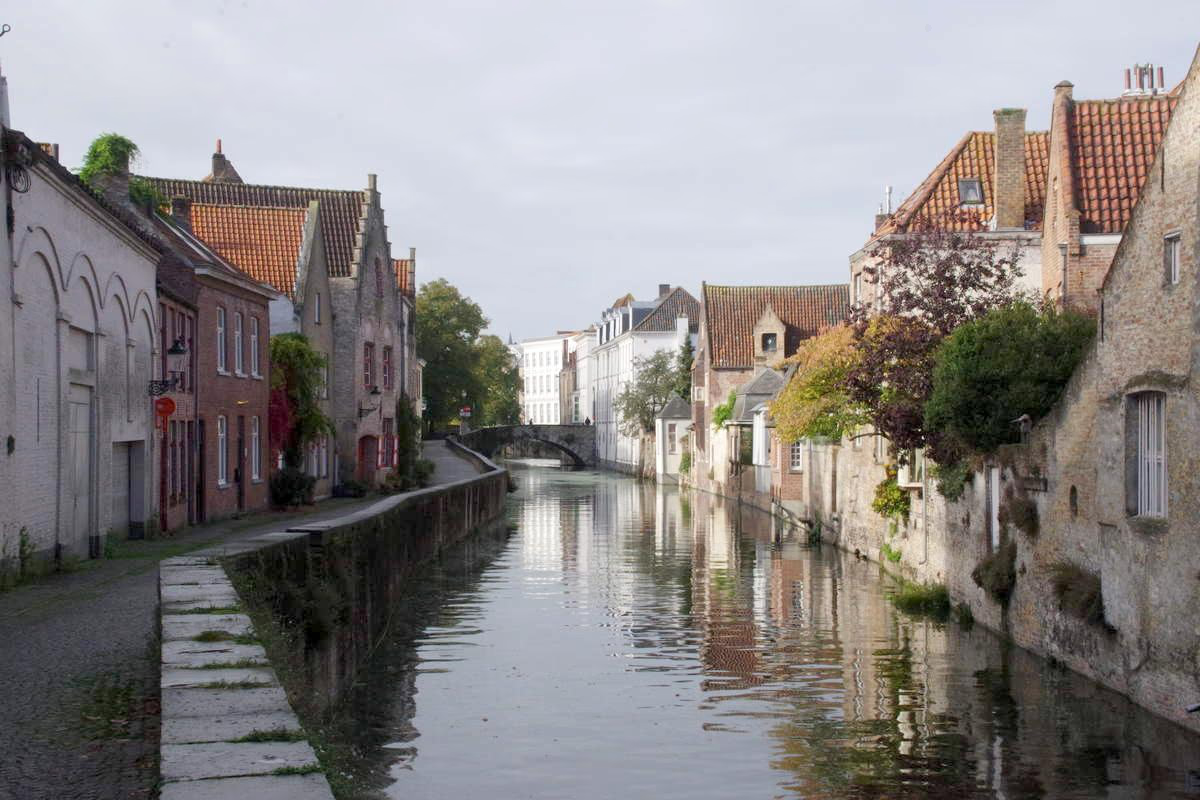
brugge
houses on a canal
Waiting for a cargo barge to go past, I was given a tip by the lockkeeper; visit Damme 5km away. Yes, that was well worth while. I'd seen wind farms in Britain, but here it's the true old-fashioned windmill, meant to grind corn (or, possibly, to attract tourists).
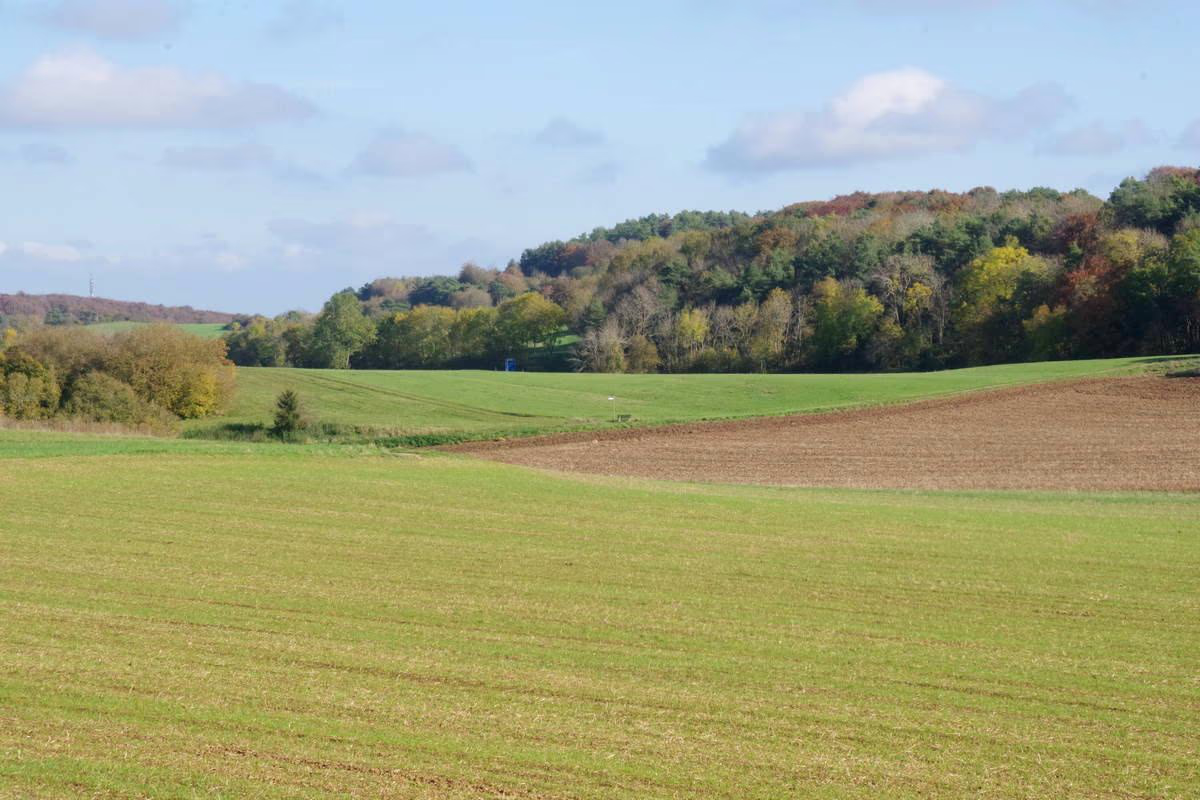
kerpen
colours I did stop for
Through Belgium and Germany, where I saw colourful scenes that I couldn't stop to photograph, an overnight halt in French Thionville and then a long grind home.
A solid day's drive across France and a corner of Belgium and then another through Birmingham got me to North Wales, where I stayed a few days with Ian Lowe. After that I criss-crossed northern England, with a brief incursion into Scotland, always hoping the rain and fog would lift. There were patches of sunshine, never prolonged, as I quartered the moors and uplands. The west of Wales and the east of East Anglia made a huge contrast: tall hedges along narrow lanes and flatter land with wider vistas. The heavy traffic in south-east England on wet roads shadowed by overhaging trees was unpleasant so, with a sigh of relief, I enjoyed the vast autumn views of Belgium, Germany and France on the way home. .
Britain : rain and shine Oct 2024
-
Northern
Germany Apr 2025
 view all the slides
view all the slides
 part 1: slides of
part 1: slides of
Goslar to near Lübeck
 part 2: slides of
part 2: slides of
Lübeck to Lingen
 part 3: slides of
part 3: slides of
Rheine to France
 map of the journey
map of the journey
Restless after a dreary winter, I decided to see visit northern Germany. Starting at Goslar, which I'd glimpsed two years ago, I visited several of the major cities and avoided several others. The weather was almost always sunny, the scenery spring green, forest brown and watery blue. I saw the Lüneburg Heath, the land of the river Ems, the hills to the east of Köln and the Eifel hills to its south-west. The Mosel and the Saarland were shown in their finest array.
What were the high points of this trip?
For old buildings, narrow lanes and quiet friendly atmosphere, Goslar, Braunschweig and Celle the first few days were special. The cities of Lübeck and Bremen also had interesting 'old towns'. Kirchveischede and Monschau caught my fancy too.
For water scenes, Lübeck, Kiel, Oldenburg and Bremen would be hard to beat, though further west the region by the Nord-Ostsee Kanal was full of surprises. And, of course, the valley of the Mosel is always attractive.
Small towns that enchanted me were Meldorf, Rheine and Monschau.

As for scenery, the whole journey gave great pleasure. I should perhaps have stayed longer in the less built-up west; the border regions of the Eifel hills and the Saarland that I raced through but never explored properly.
The people I came in contact with were always friendly; the cafés and restaurants provided good service.
But surely, there must have been lesser moments? — No, I can't say there was any time when I was bored or disenchanted. When I lost my way, especially when roadworks detours were badly signed, there were new sights!
So I'll repeat – it was a wonderful trip !

A long motorway journey got me just south of Kassel. A welcome dinner before a cool quiet night in the car.
Past Göttingen to Goslar, my goal for this first day. Overcast, so that the magnificent old buildings weren't to be seen in their best light, but oh, so many sights to be seen! The old town lost little in World War II and you can wander for (medieval) ages. Braunschweig (Brunswick), to the north, also was interesting. Celle, further on, had a great selection of old houses down cobbled streets and, as befits a regional capital, a shining castle in sparkling gardens.
Luneburg Heath didn't look like a heath at all at first, with much mixed woodland on flattish, quite rich soil, so I turned eastwards towards towns I'd been recommended.Ludwigslust wasn't one of them, but I arrived at quiet sunset time and was immediately pleased by pompous buildings, a planned layout and a fine meal.
I was disappointed by Schwerin – it's a fine place really, with a renowned tourist-polished castle and clean promenades beside bright lakes, but my waterside hotel was somewhat run-down, as seemed much here. So, after a gentle stroll, I passed through Wismar to the north to follow the breezy northern coastline west to Lübeck.
Now here's an age-old city that's well worth a visit – and there were crowds of visitors! Many were munching in the town hall square, many more were down by the river, sunning themselves or taking a boat trip on the Trave.North to the city of Kiel, where water is again the dominant element. The thronged long promenade gives various views of this naval town; to get back into the centre you amble through quiet residential roads and big picnic parks, though you may also squander your time on quality shops of all sorts.

Flat green fields and small villages greeted me on my drive westwards until I came to a major sea-going canal and a posh Landeshaus restaurant at Hohenwestedt where the food was good and well-served.West again, to this Nord-Ostsee Kanal which cuts off a big corner for ships travelling to Hamburg from the Baltic. Pointing towards Meldorf, which is a very nice small town, a long tall girder-built structure had me baffled. It turned out to be a rail bridge to cross the canal and that I would have to take a 2-minute ferry to do the same in the car. Twice, in fact, because to get back to Itzahoe and Hamburg I needed to recross the canal. No need for such time wasting at Hamburg – the busy motorway tunnels under the river Elbe on its way to Bremen, another Hanseatic city.

A frosty morning was followed by sun when I strolled in Bremen along the bank of the river Weser – you always have to be wary of the multitude of cyclists – and in the central square with its old buildings. Oldenburg also has gentle waterside walks; a wide canal is blocked off to allow a marina for small craft. My stroll back to the Landesmuseum and the car was nearly endless; with all these canals I couldn't remember where I'd parked. Gradually I found my way south and stopped in Lingen, a charming little place in the Ems valley.

Following the Ems and yet another canal southwards brought me to Rheine, which I really enjoyed. I began at a century-old church, the Antonius-Basilika, where I wandered for a good while admiring the striped pillars, wood carvings and painted ceilings and walls. Then down to the town centre on the Ems, well-appointed with shops and cafés in sunlit squares. The town's church of St Dionysius is also here, with its decorated ceiling and stained glass windows.
South to Soest, where the hilly parkland of the Arnsberger Forest begins. A meagre picnic sitting in the sun of a carpark before I found a lovely quiet spot for the night's kip in a rolling landscape.
Now that's a view to wake up to in the morning! And a farm-track stroll led to a fox sunning itself before stalking away. Meschede, a small town nearby was quietly going about its bustling market-day business; it is near the start of the river Ruhr. More undulating scenery with twisty roads led me to the unexpected pleasure of the black-and-white timber-beamed houses of Kirchveischede; a small village with many forest walks.
I tried to follow the main road towards Köln but somehow the signs led me astray. However, I ended up in a fine hotel in front of an excellent meal.The next day I got to Köln (Cologne) but stayed only a few minutes, just enough to look in the cathedral, before heading west again to Aachen (Aix-la-Chapelle). Again only a glimpse into the tourist-packed cathedral (though it has lots of interest) and the central squares.
 Warmer today, with sun beaming as I carried on south in
this wooded border-land with Belgium. And on to another unexpected
village worth visiting – Monschau. I'm glad I arrived late in
the day; I have a feeling you'd be swamped by visitors in daytime.
Warmer today, with sun beaming as I carried on south in
this wooded border-land with Belgium. And on to another unexpected
village worth visiting – Monschau. I'm glad I arrived late in
the day; I have a feeling you'd be swamped by visitors in daytime.
Now here's an area I'll have to visit again; the wooded rolling lands of the Eifel forest. It's a nature park on both sides of the border. But the fog didn't lift until I was well on the road towards Trier, when I came to the small Luxemburg town of Wasserbillig. Here the Mosel (Moselle) river flows and the vineyards begin, the quaint waterside villages too.
 Turning south before Trier onto the
Saarbrucken road treated me to fine landscapes and, at last, a
restaurant, before I halted for a last night's sleep.
Turning south before Trier onto the
Saarbrucken road treated me to fine landscapes and, at last, a
restaurant, before I halted for a last night's sleep.
The whole of the Saarbrucken to Saarebourg is another fascinating area to which I'll have to return. I just hope that I don't get lost again; it looks so simple on the map but, possibly because I was in France now, the signs didn't point the way I'd expected. Once I'd found Rambervillers and Epinal, though, the road home became just an easy drive.

Restless after a dreary winter, I decided to see visit northern Germany. Starting at Goslar, which I'd glimpsed two years ago, I visited several of the major cities and avoided several others. The weather was almost always sunny, the scenery spring green, forest brown and watery blue. I saw the Lüneburg Heath, the land of the river Ems, the hills to the east of Köln and the Eifel hills to its south-west. The Mosel and the Saarland were shown in their finest array.
Northern Germany Apr 2025
-
Coming
Soon (12) when ??
 view the slideshow
view the slideshow
Book 12 coming soon when ??
-
Coming
Soon (13) when ??
 view the slideshow
view the slideshow
Book 13 coming soon when ??